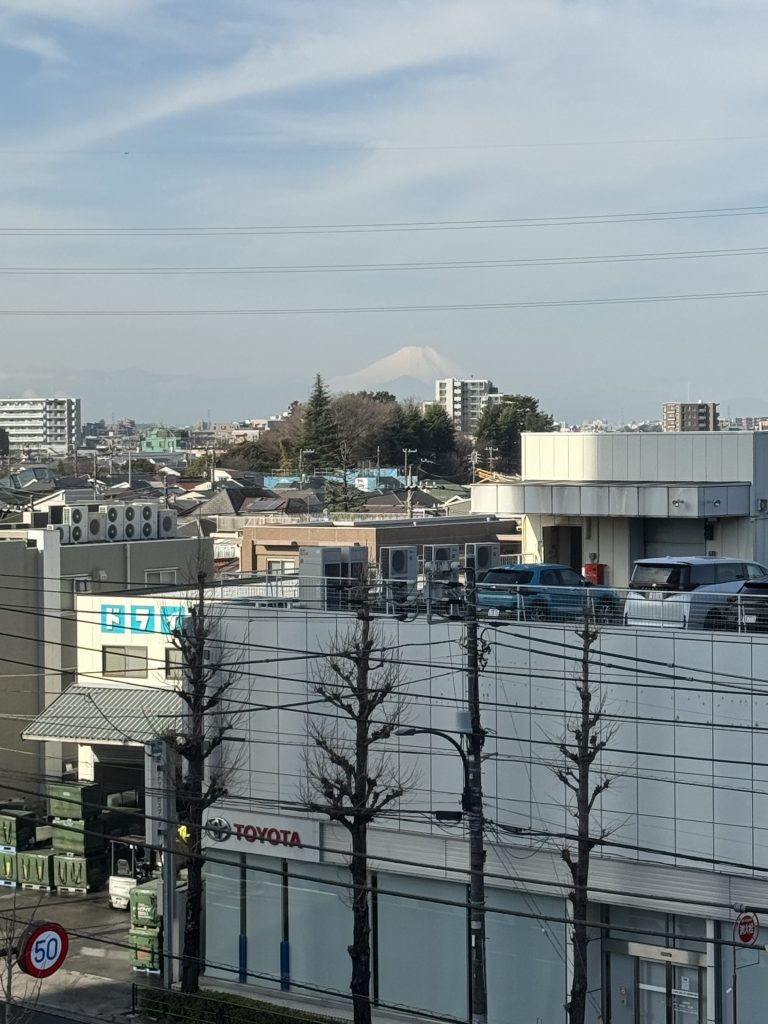
This morning I woke up and I could see Mt Fuji from my hotel window. I was so excited. We travel to see her tomorrow, but even if the weather turns bad, I’ve seen her with snow.
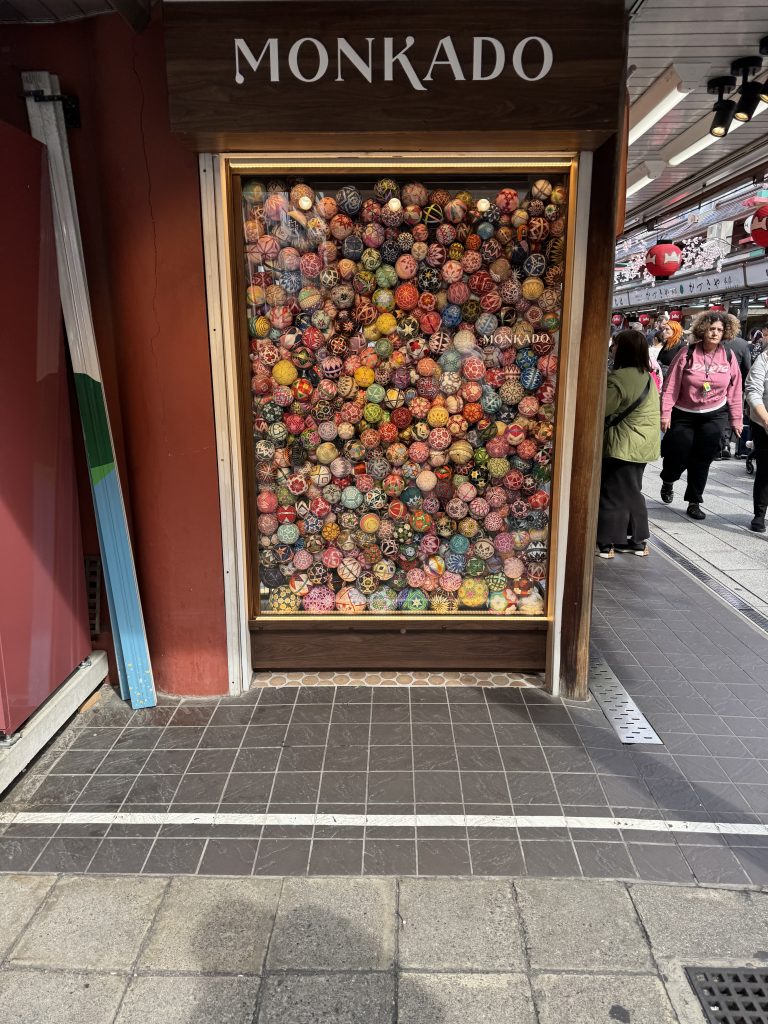
Today was an optional tour, costing around $100 AUD. It was money well spent as far as I was concerned. I have no idea what to see here. If you were a more independent traveler, or had friends you wanted to catch up with, then the flexibility to choose would be great.
Our first stop was a Buddhist temple.
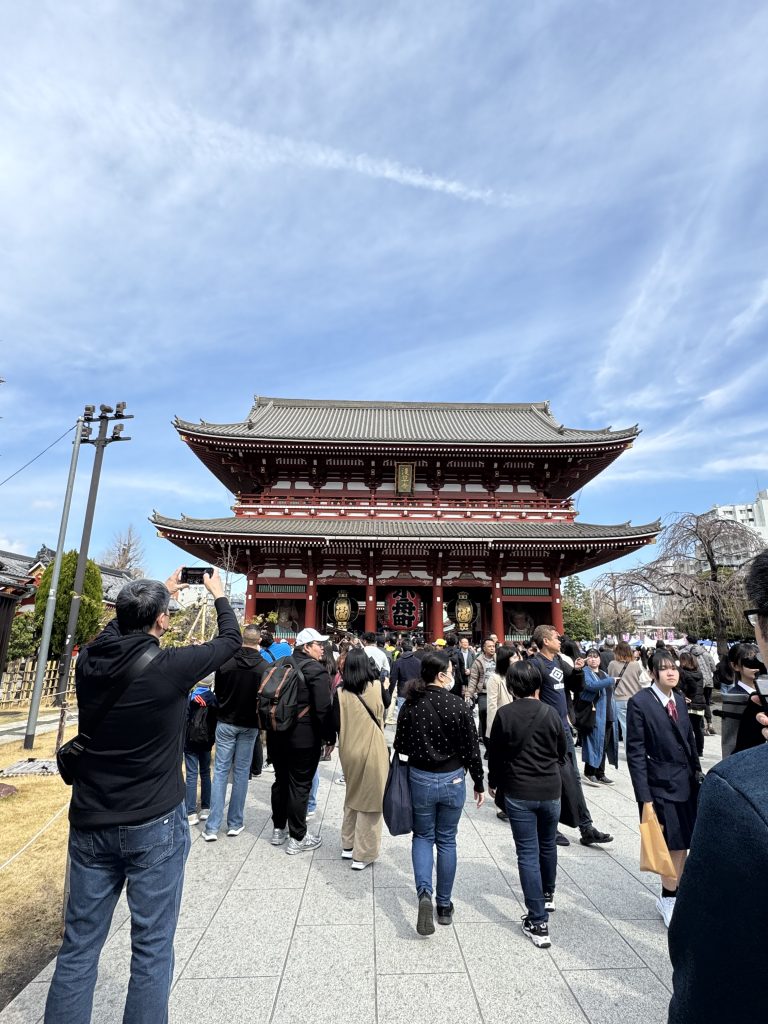
Shinto temples, like the one we saw yesterday, are empty. Buddhist temples are very different.
It’s very common in Japan to believe in both religions. Buddhism came from China, originally from India. If people believe in the same faith, it’s easier to control them, so the government built lots of temples.
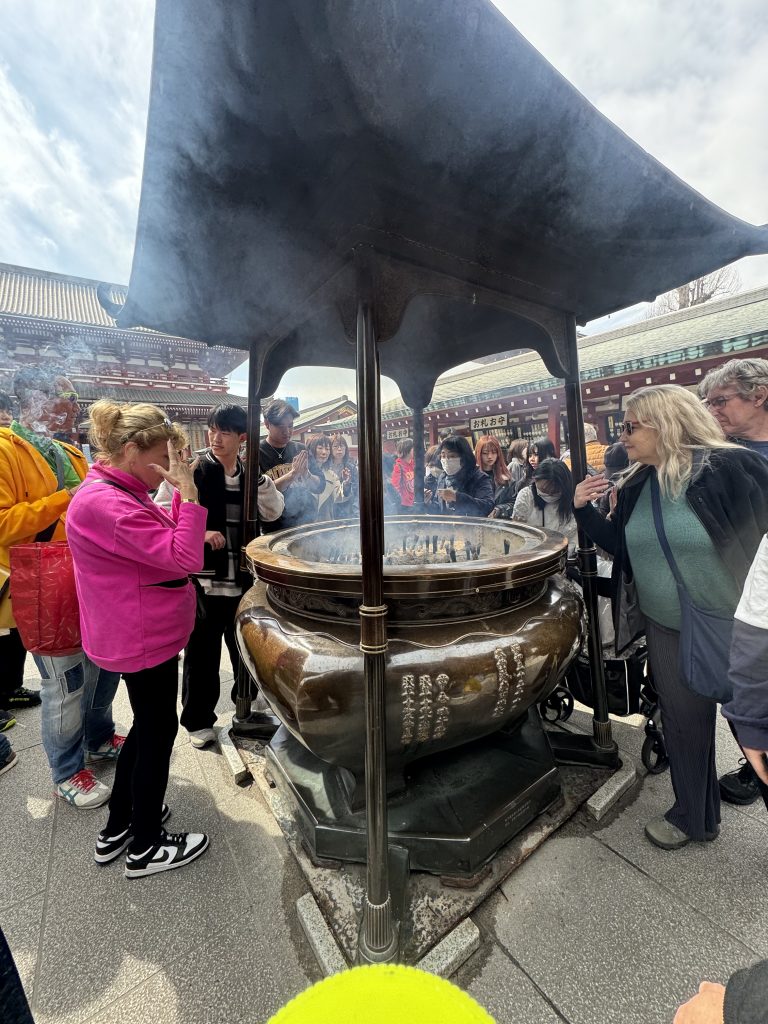
In olden days, if you were sick, you’d go to the temple first. Buddhism explained everything, which was a comfort to people before science. As we walked towards the temple proper, I could smell the incense so strongly. Lighting incense, then waving the smoke towards where you feel I’ll, is a tradition from the oldest times that still exists today.
During the Meiji restoration, there was a resurgence of nationalism and they tried to ban Buddhism because it came from China. They tore down a few temples but met with great resistance from the local people. After all, it had been here, entwined with Shintoism, for hundreds of years. So they separated the two religions, which is how it is today.
China is intolerant of other cultures. Ten years ago, it was safe to wear Japanese kimonos on the streets. Now, people will point and question why you are wearing a different culture’s clothes, which is a bugger for Chinese kids who like anime. If you don’t take off the clothes yourself, they might “help you “. Ben is from China, so I believe him. “It’s a worrying sign,” he said. “It’s very bad.”
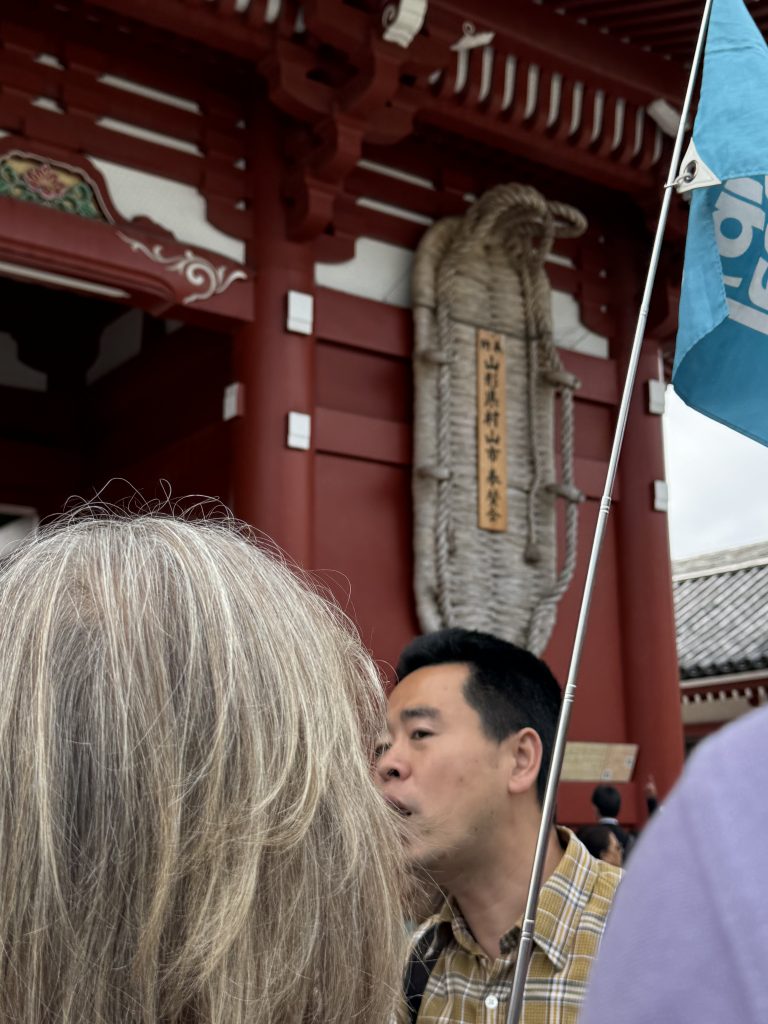
Here is one of the two shoes that are periodically made for Buddha. The Japanese believe that he is very, very big.
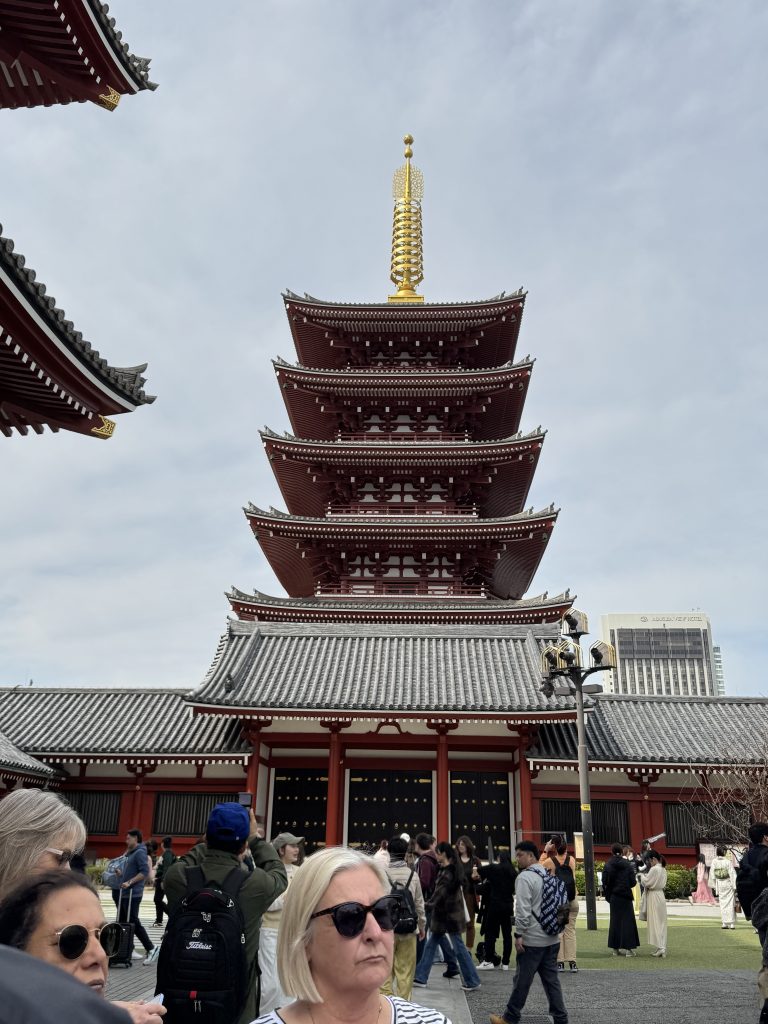
Pagoda has a huge column suspended from the top floor to absorb earthquake tremors. The Japanese learned how to do this centuries ago.
This temple also has its fund-raising efforts.
You can buy little fortune-telling things that tell your luck. If it’s bad luck you can leave it here and Buddha will cleanse it. If it’s good luck though you can bring it home with you. Isn’t that convenient?
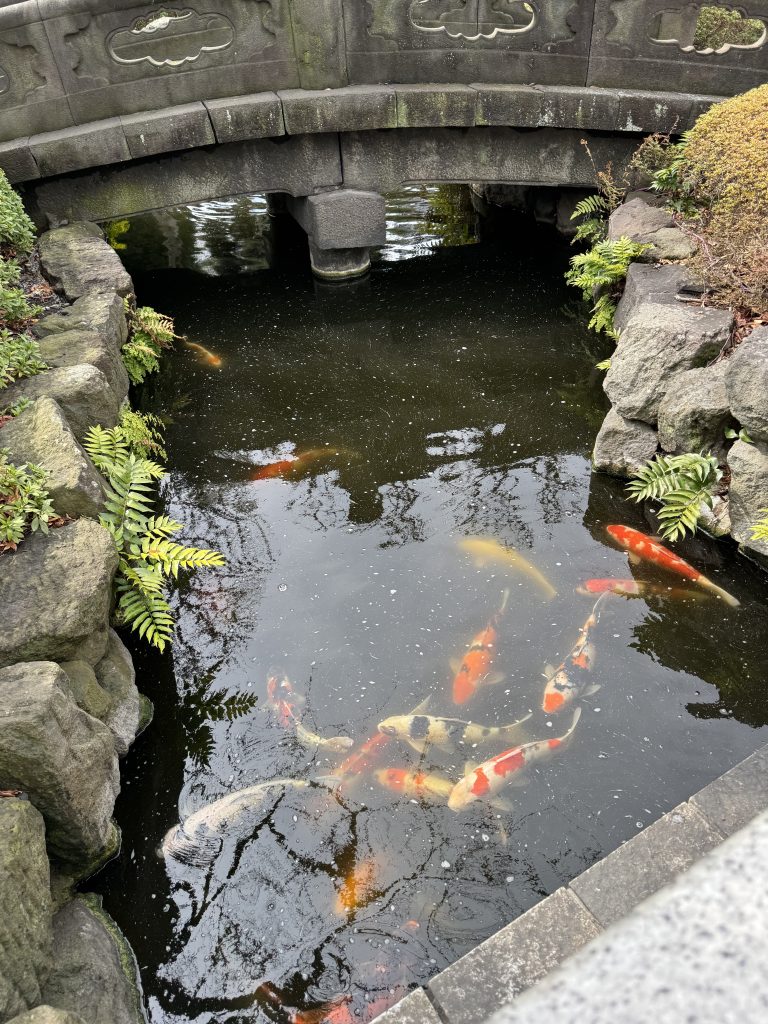
Before he set us loose for a half hour’s free time, Ben took us to see the koi. He told us of a lovely custom.
Buddhism famously believes in reincarnation, where, depending on how you behave in your current life, you may come back as a human or an animal. On October 15 every year, people go to the market and buy a fish and then return it to the water. It might be your grandmother or your brother…
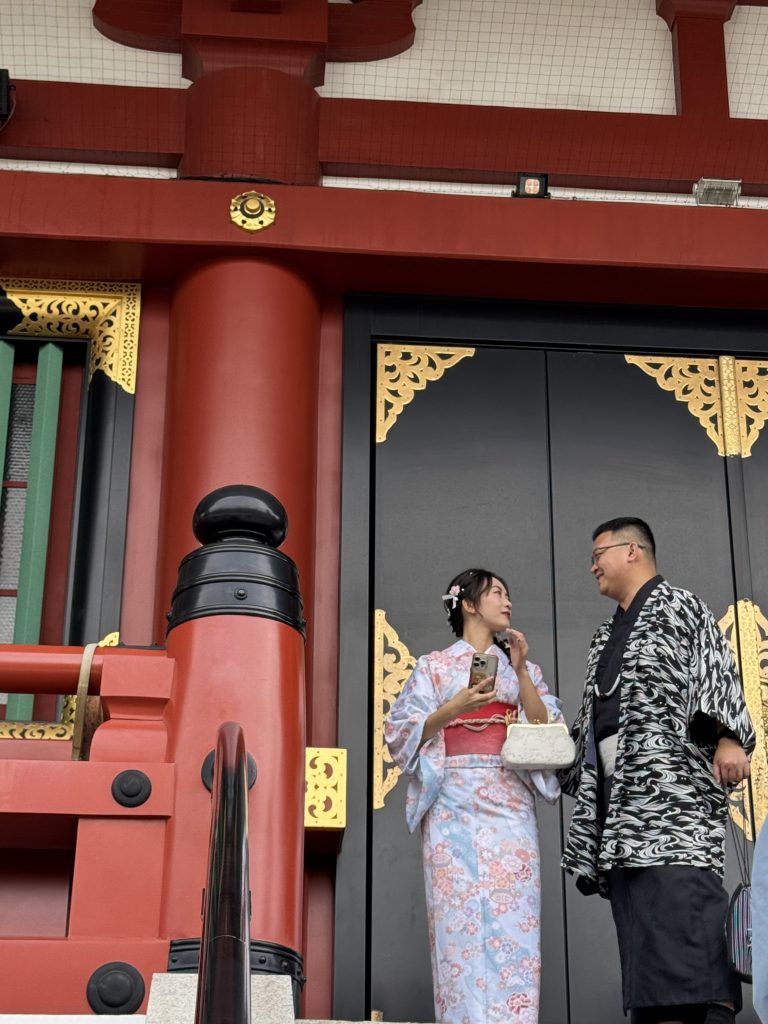
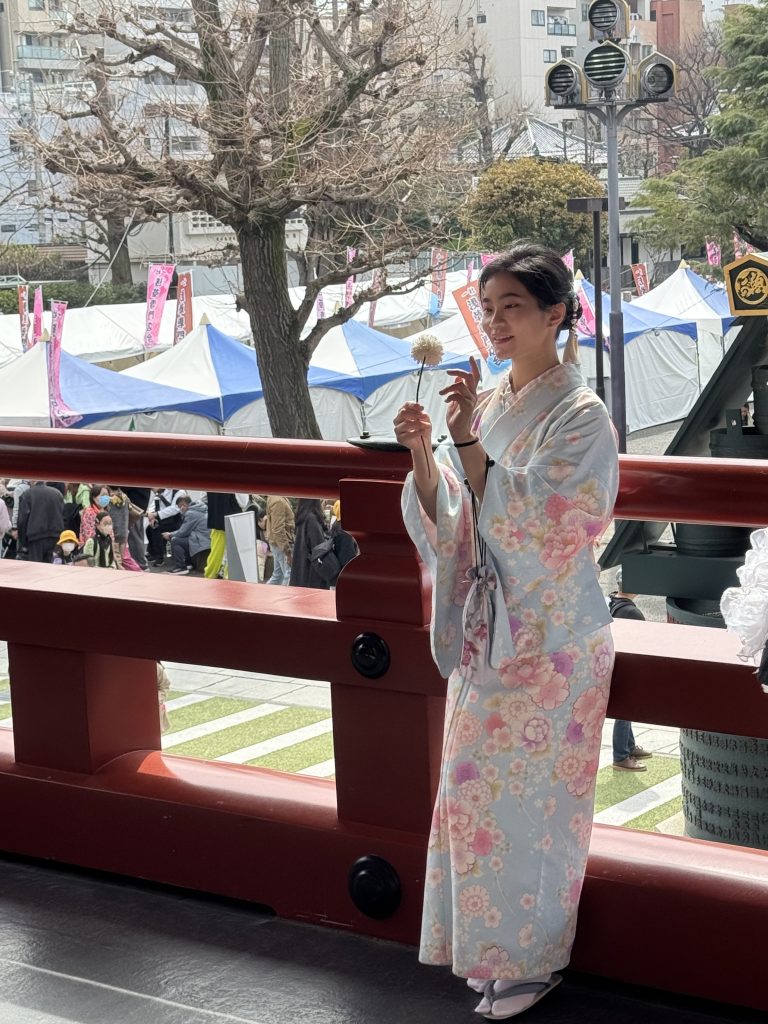
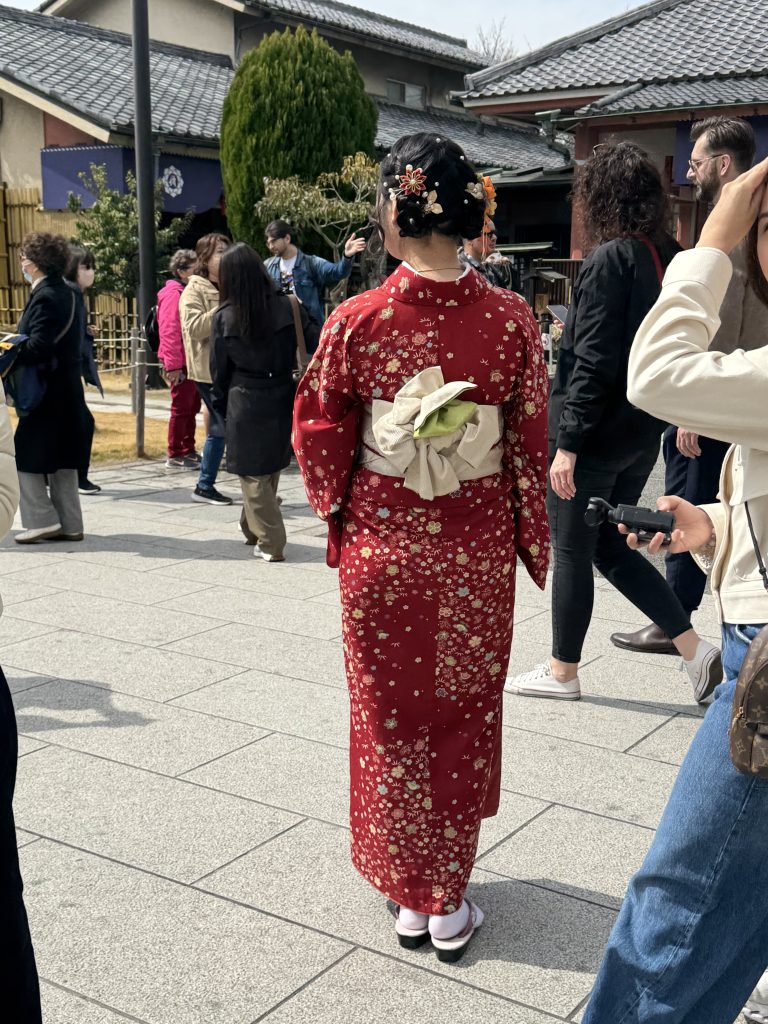
As I was walking around, I noticed lots of young women dressed in traditional clothes. Was this a thing that people did? Was this a special day?
Later, as I was walking back through the market, I saw rental shops for the clothing. Apparently, it’s a thing for young people to do.
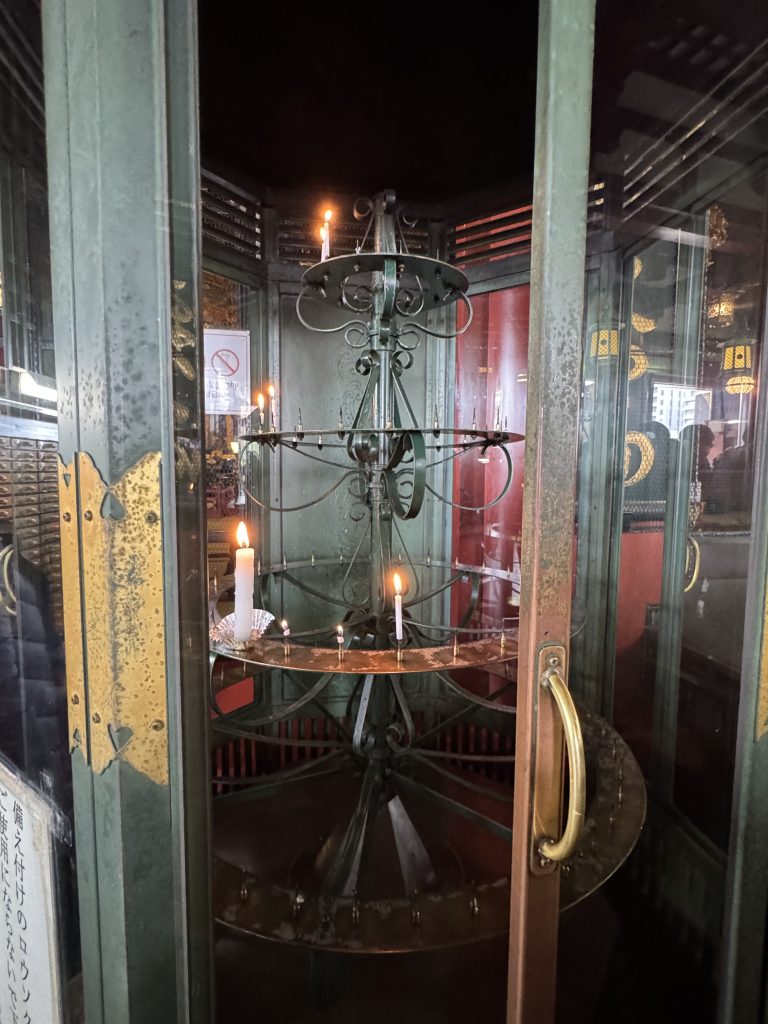
Just like the churches in Europe, you can light a candle. I lit two, wishing with all my heart that Mum and Dad would stay upright and breathing for years to come.
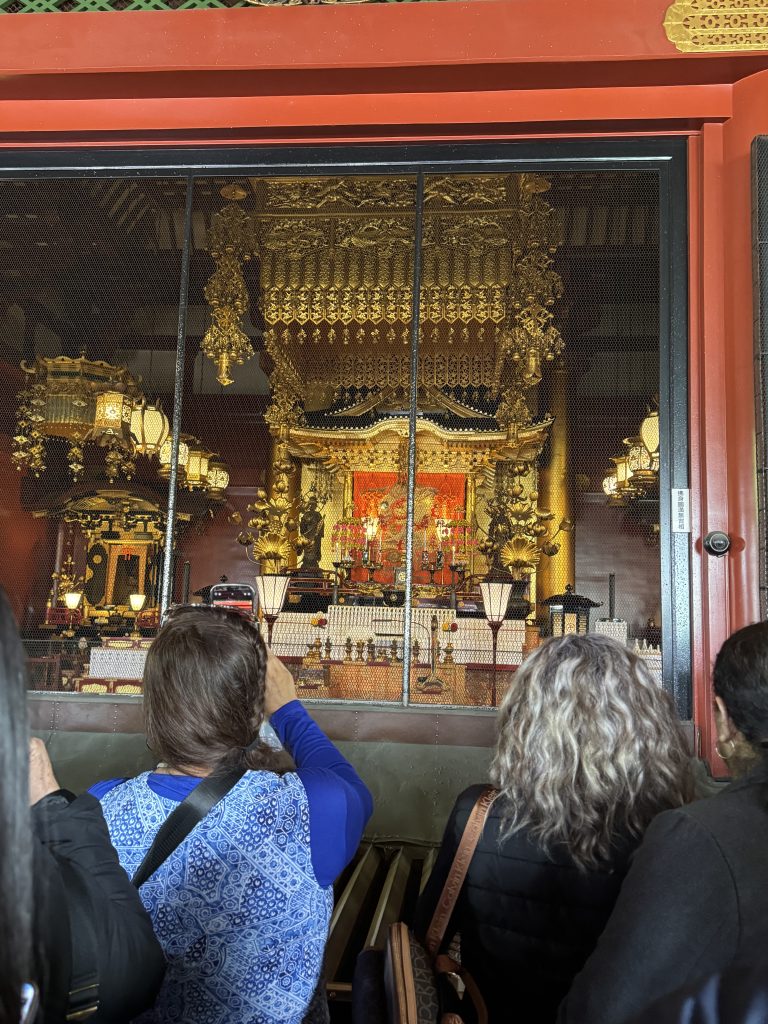
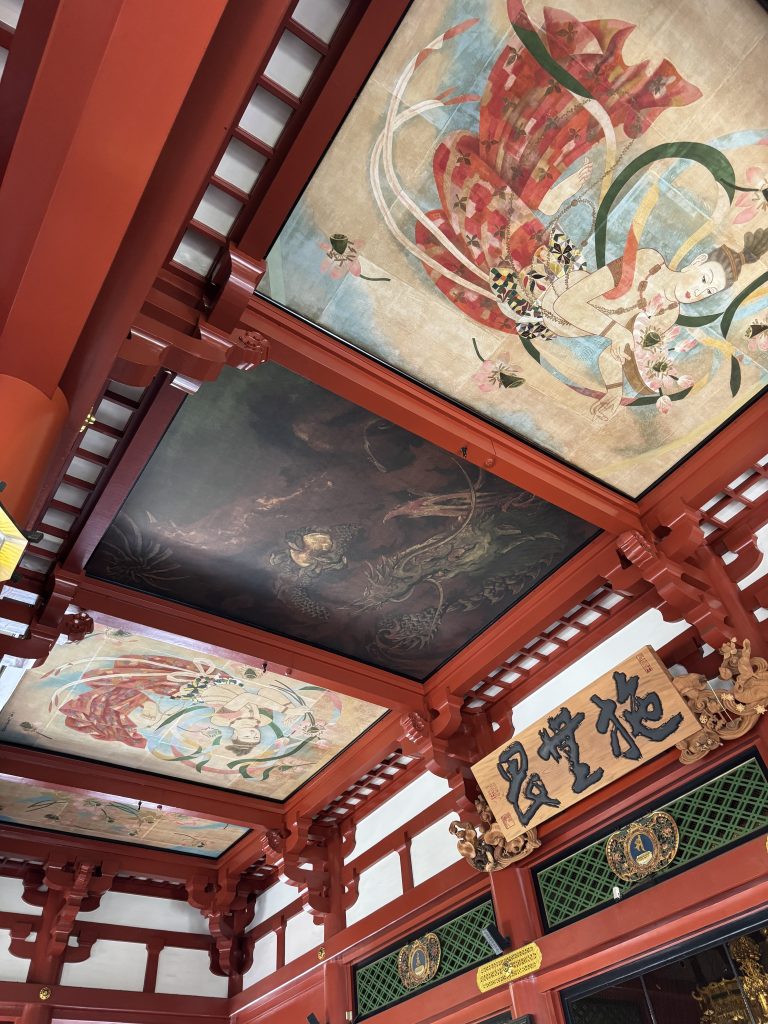
Look up! Something Scott taught me in England…
After I battled my way through the crowd, I bought a good fortune charm for my Christmas tree. That’s Japan done!
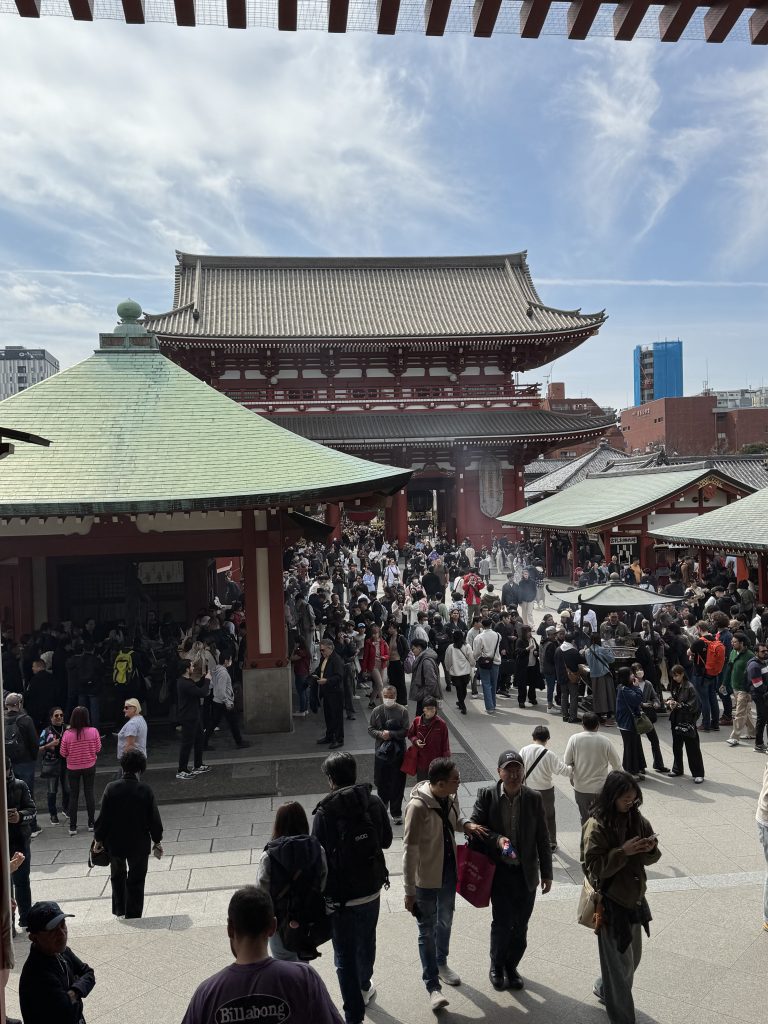
I have to say, the Japanese don’t seem to mind mixing religion and commerce. The market, right outside the temple, was doing a roaring trade.
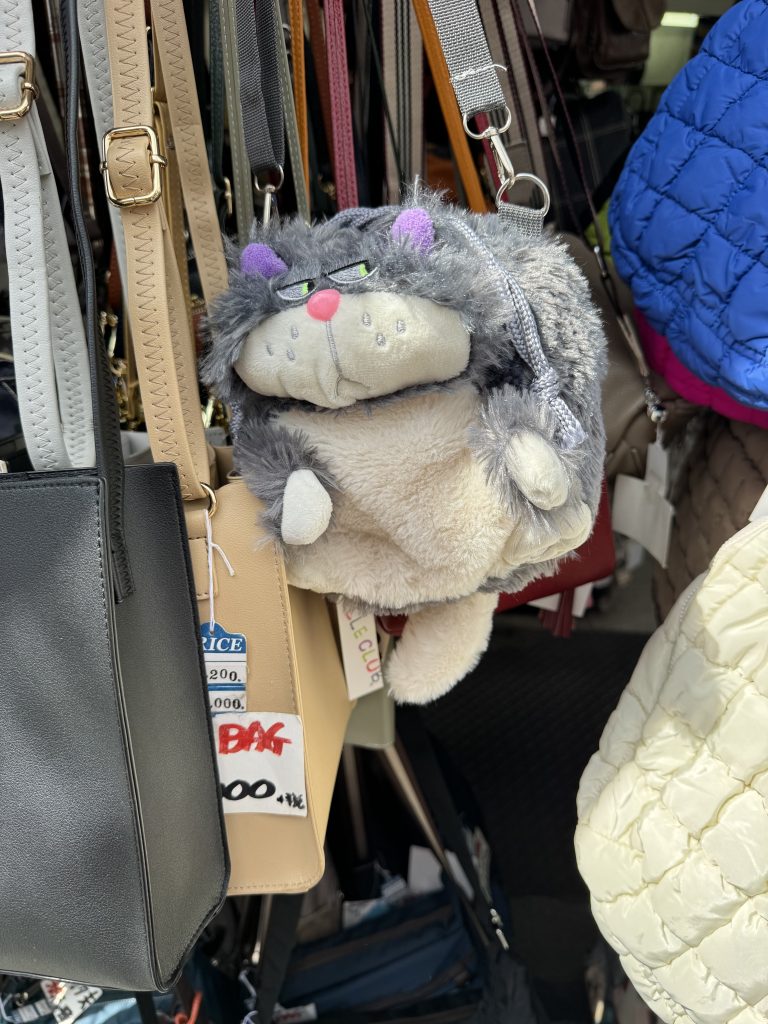
I didn’t buy this bag, but maybe I should have.
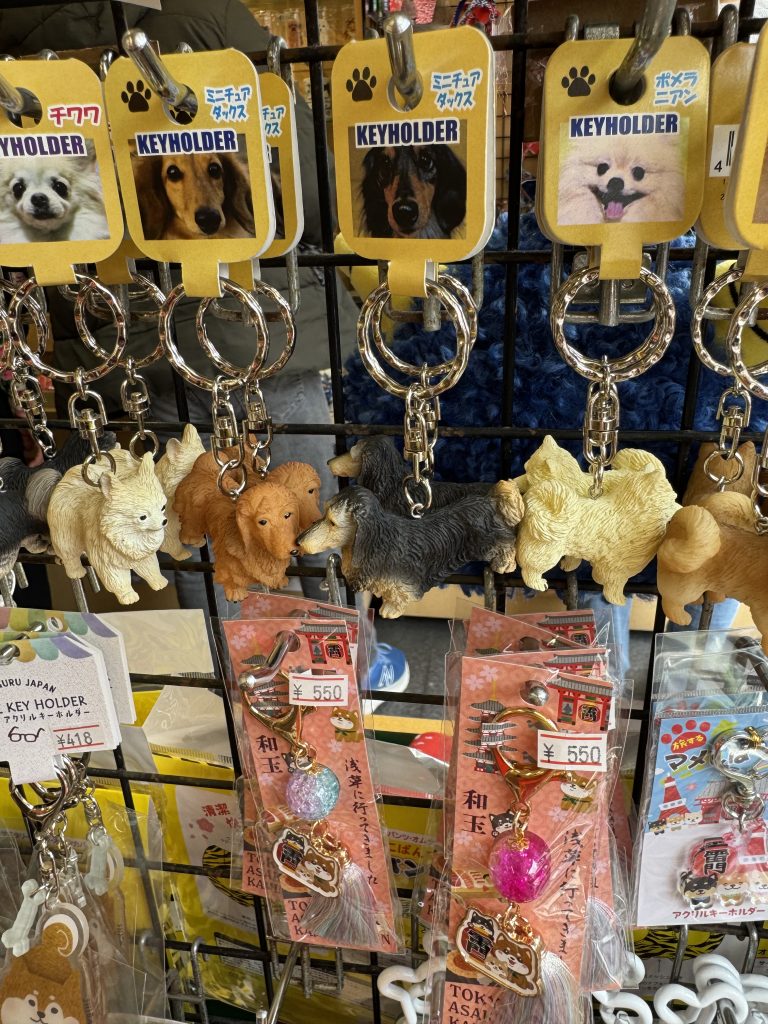
I DID buy this dachshund key ring for Georgia.
Scout is her favourite housemate, after all.
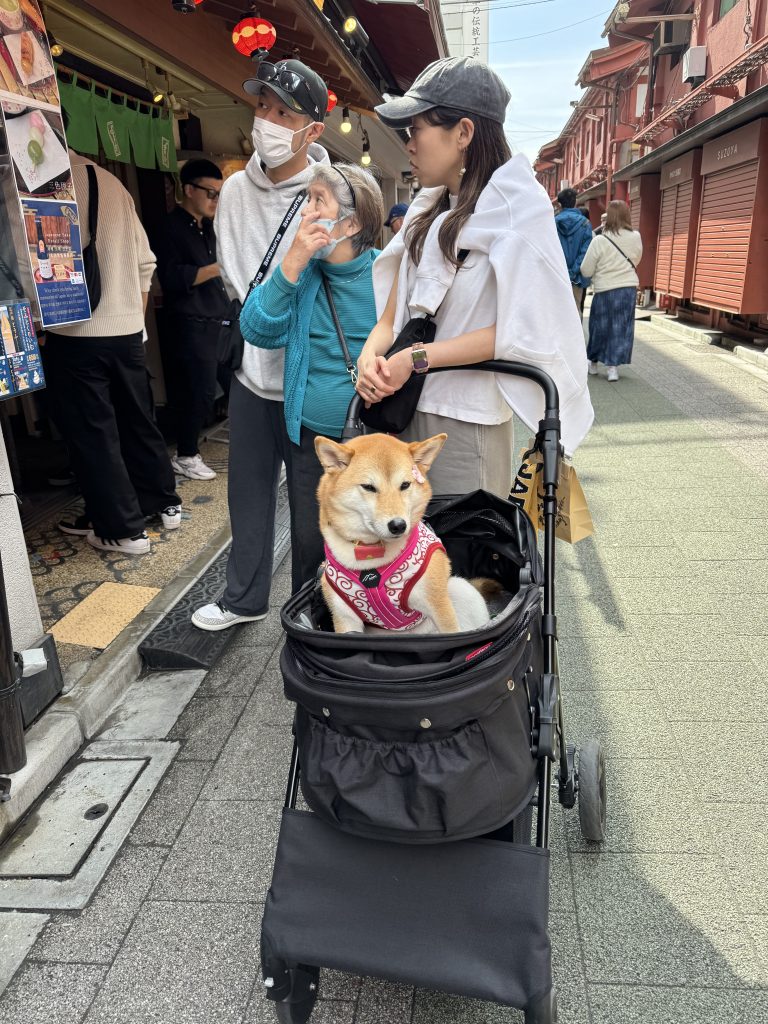
Zoom in on this dog’s cheek. Can you see the crocheted flower? 😂
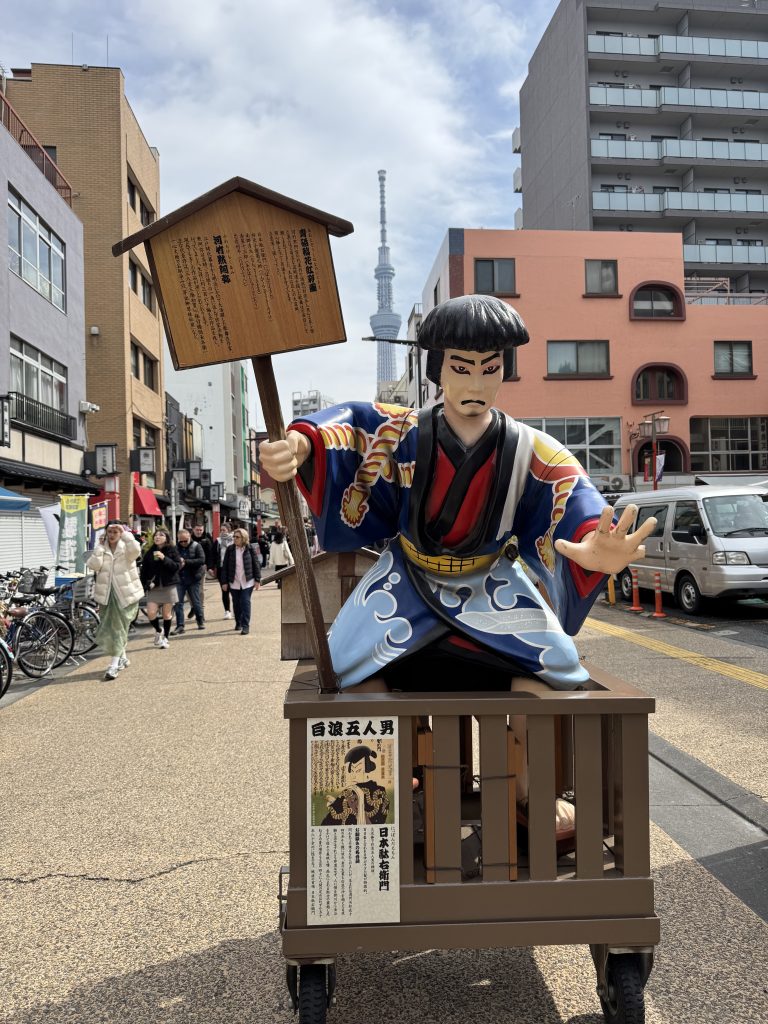
I liked the contrast of the traditional figure in front, with the huge tower behind.
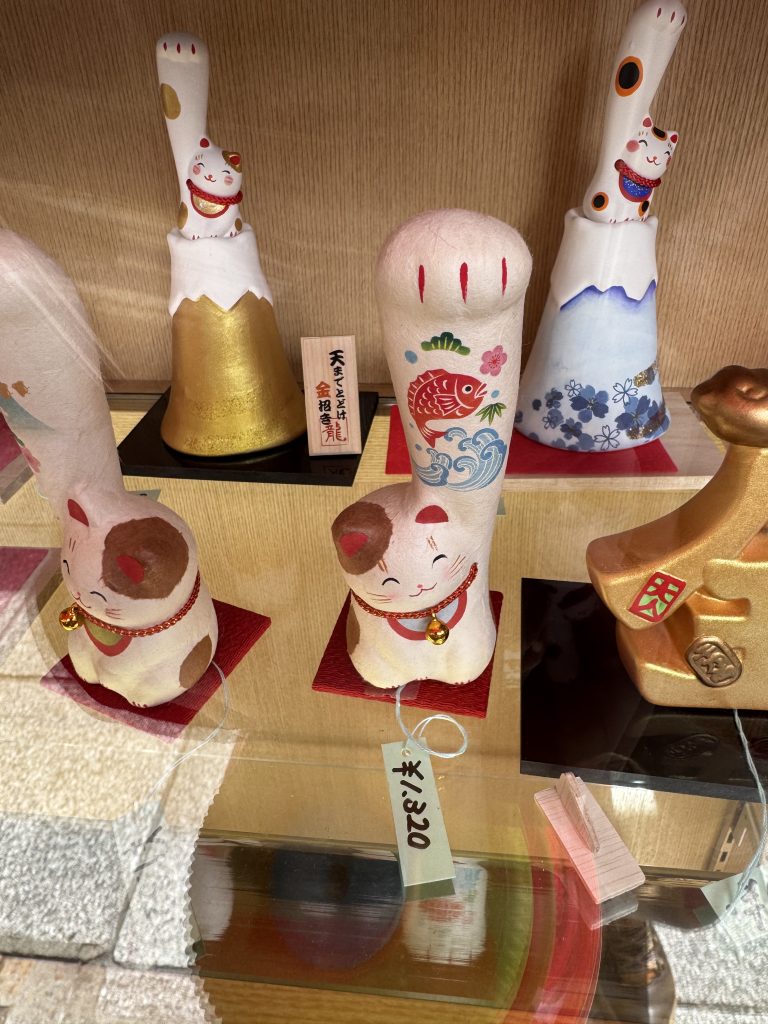
I’m not exactly sure why these cats are shaped the way they are. They remind me of something…?
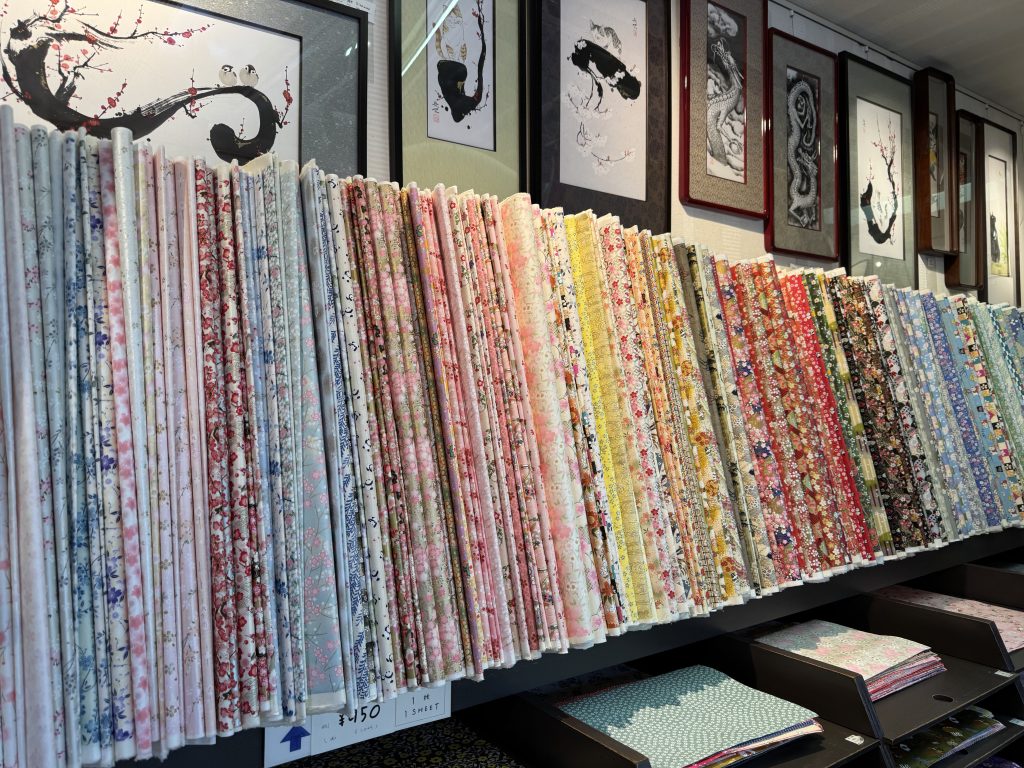
This looks like a fabric shop, doesn’t it? But it’s paper.
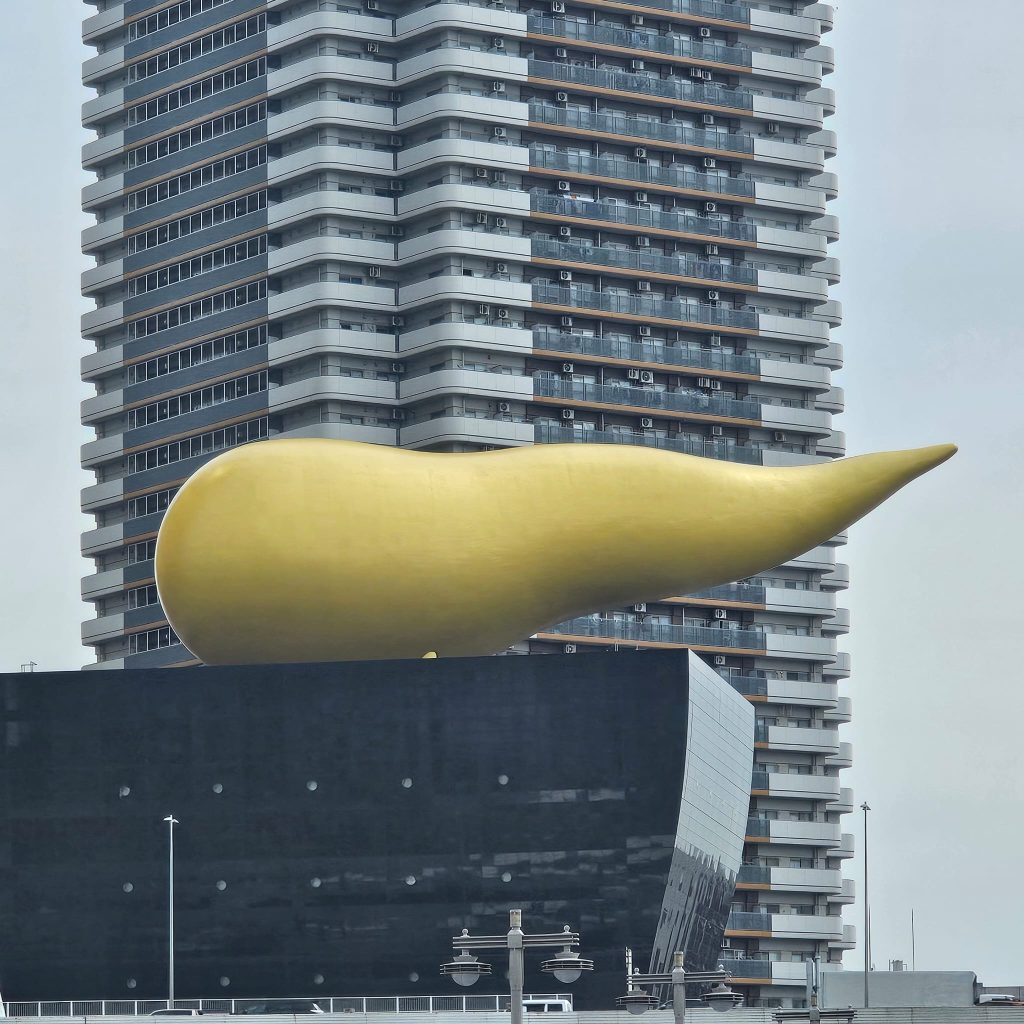
Here is a sculpture that the Japanese affectionately call’The Golden Poo.’
It’s supposed to symbolise the eternal flame of life that burns within us all… but yeah. Giant golden poo.
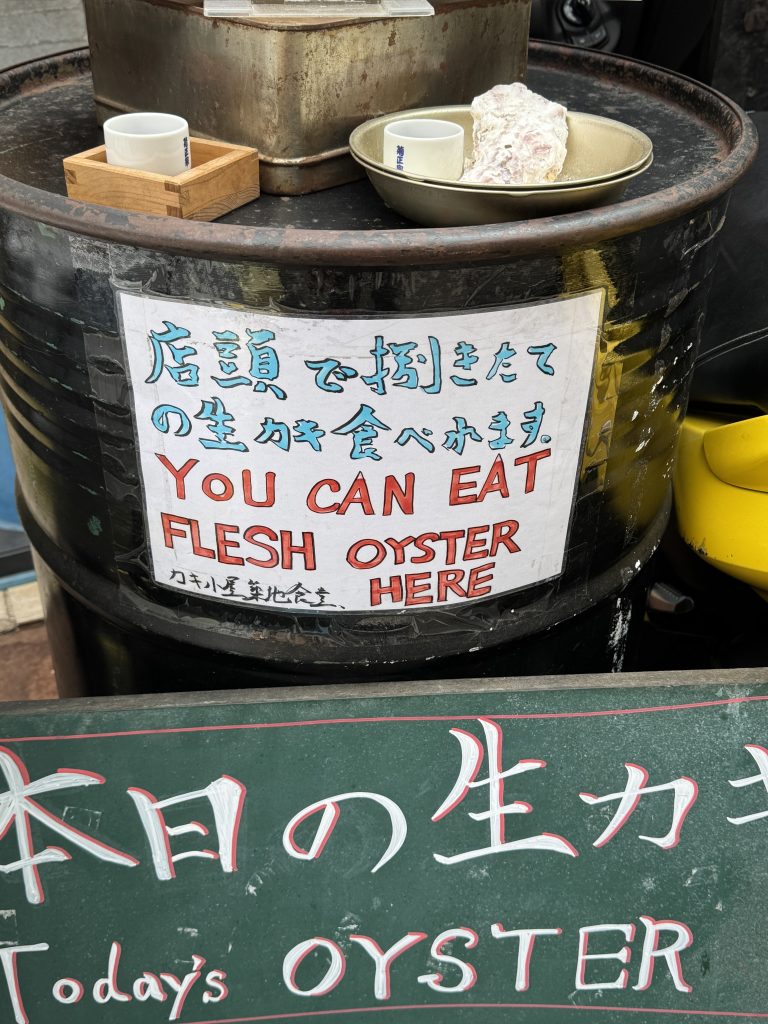
Our next stop was the old fish market. I didn’t expect to enjoy it all that much, but it was great! It helped that I had the freshest salmon and scallop sashimi for lunch for around $6. Talk about living the life!
This place was packed with tiny shops, some selling ingredients while the rest were selling all sorts of things to eat. Barbara and Lyn called out, “We’re coming with you, Frogdancer!” as I set off in search of lunch. Ben had directed most of the group to a shop that sold a very popular beef stew, but to my way of thinking, if you come to a fish market, you really should eat fish.
The only exception to this is if you go to a banana market, in which case you should stay on the bus and avoid all contact with that disgusting fruit.
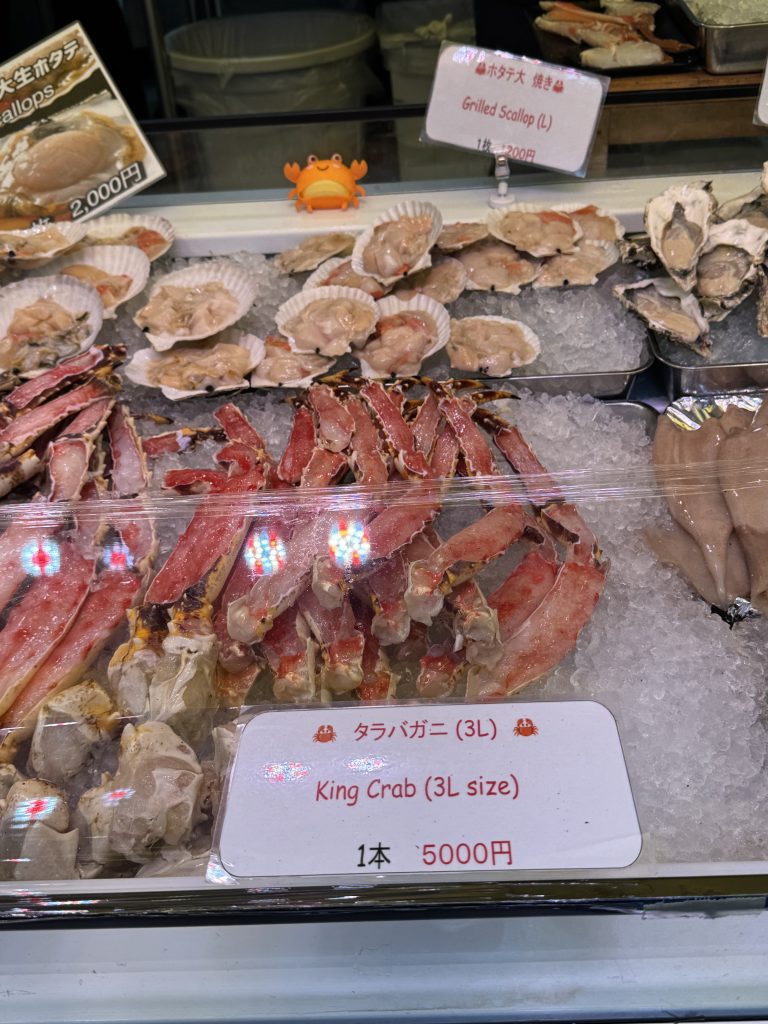
Barbara and I chose to eat sashimi, which was absolutely delicious, especially the scallops.
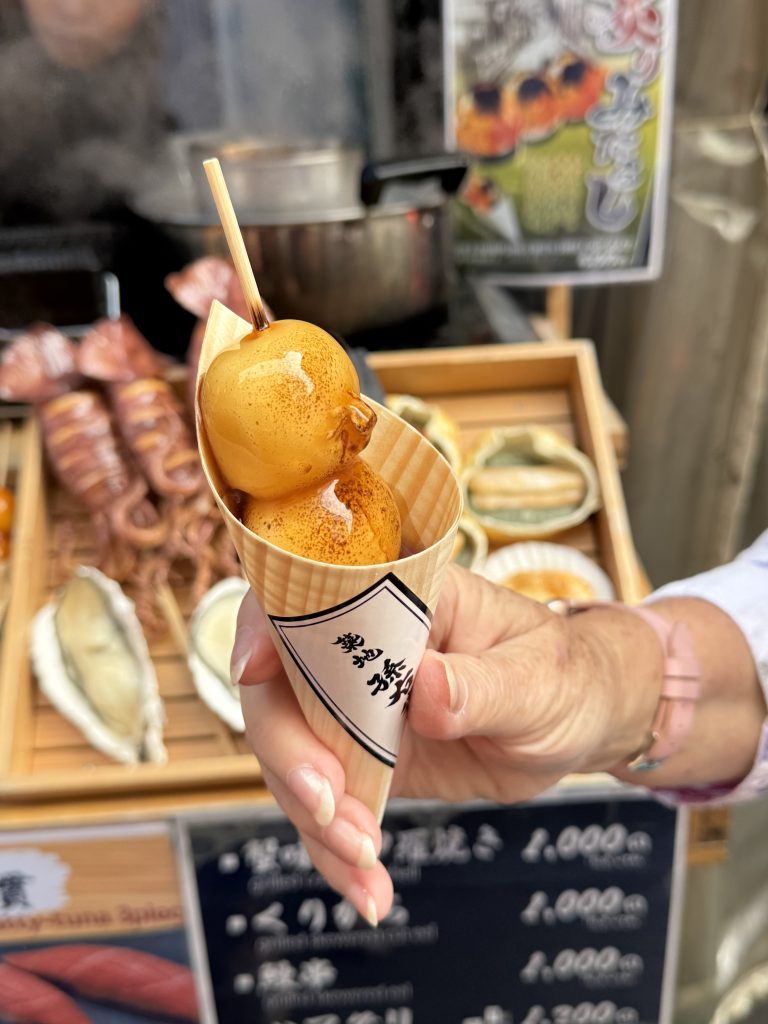
Lyn doesn’t eat fish market, so when I saw these rice dumplings dipped in soy glaze, she dove right in.
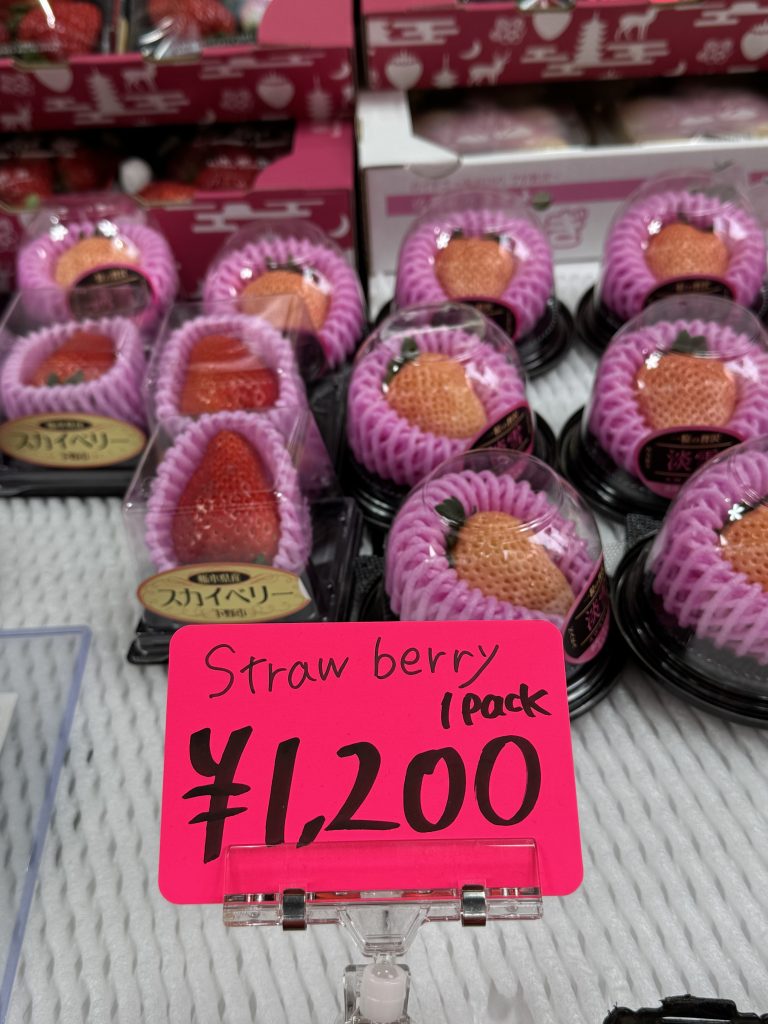
Before we got off the bus, Ben warned us about checking the prices.
“People think that because it’s street food, it’s cheap,” he said. “That’s not always the case.”
With Japanese yen, you wipe off the last two digits and you’ve got a good swap for the Aussie dollar. Now admittedly, these strawberries were almost as big as my fist, but I’m not paying $12 for one!
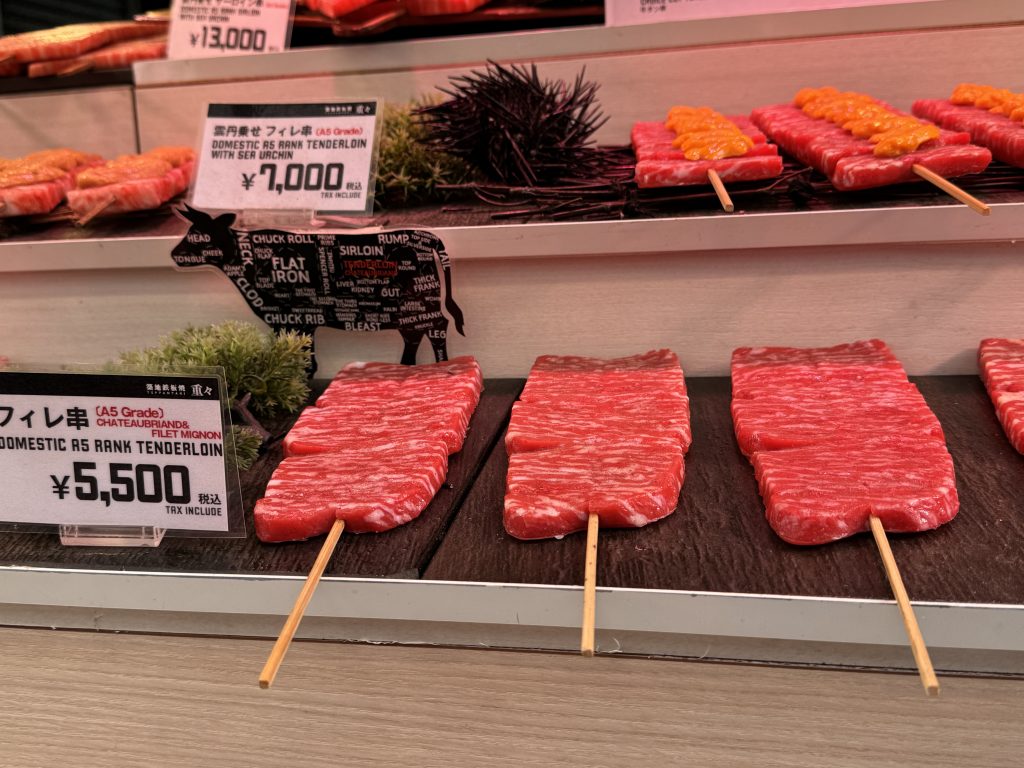
Look at the marbling on that steak!
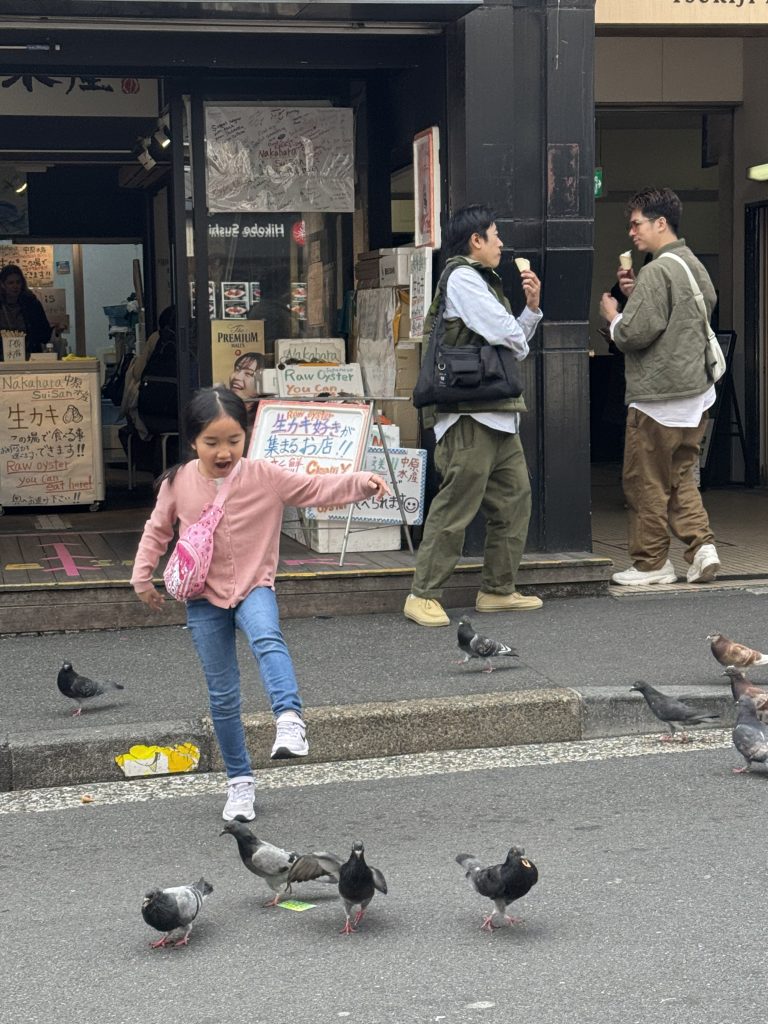
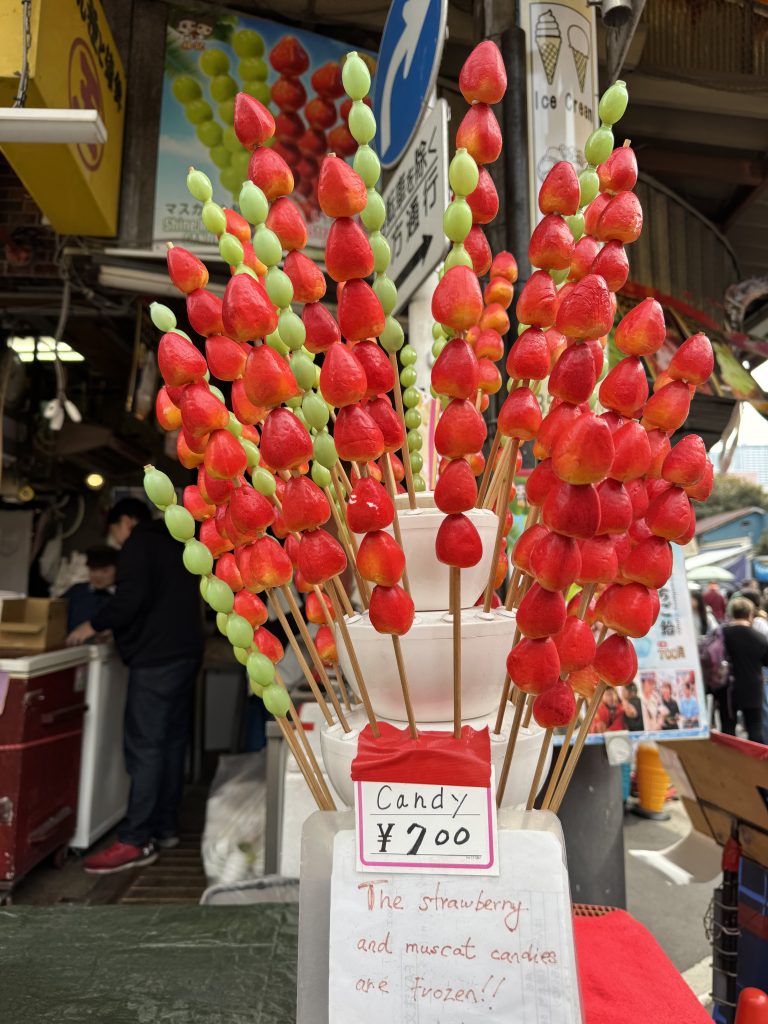
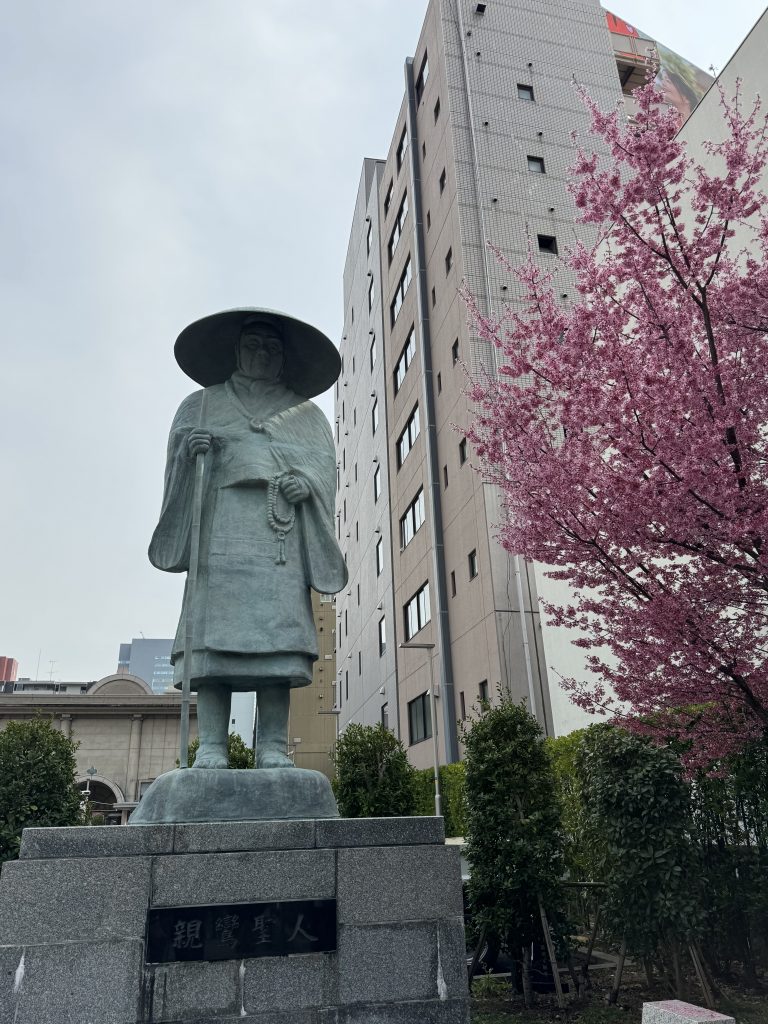
Afterwards, we had some time to kill before going back to the bus, so we walked a block to see a shrine that had an early flowering cherry.
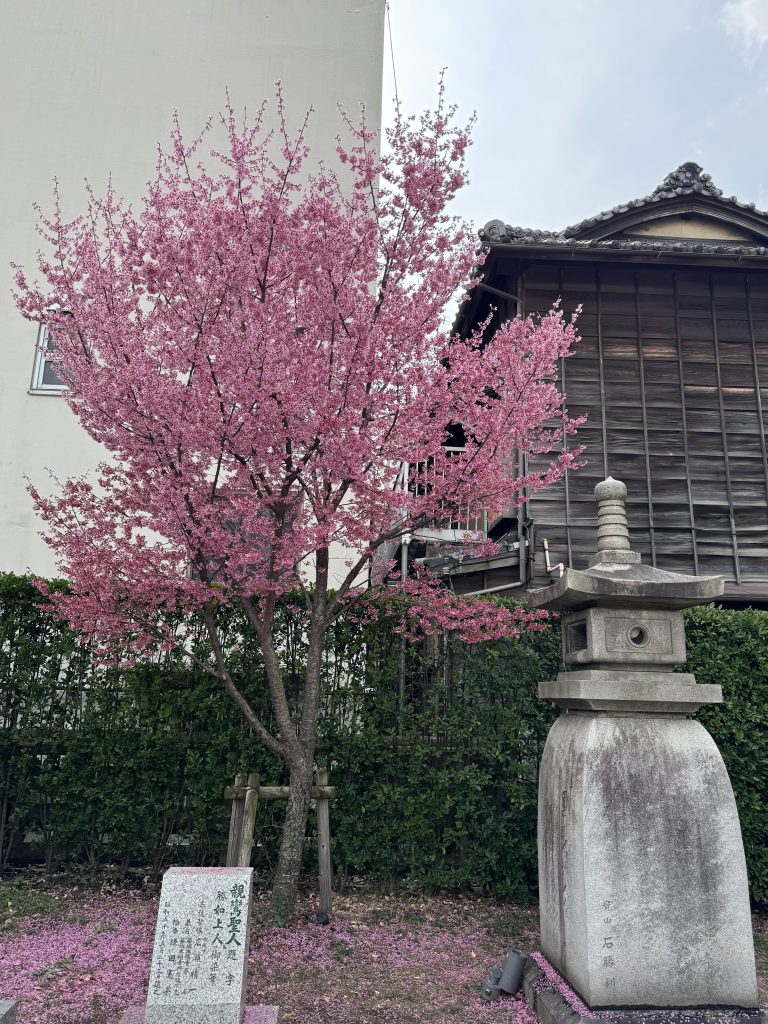
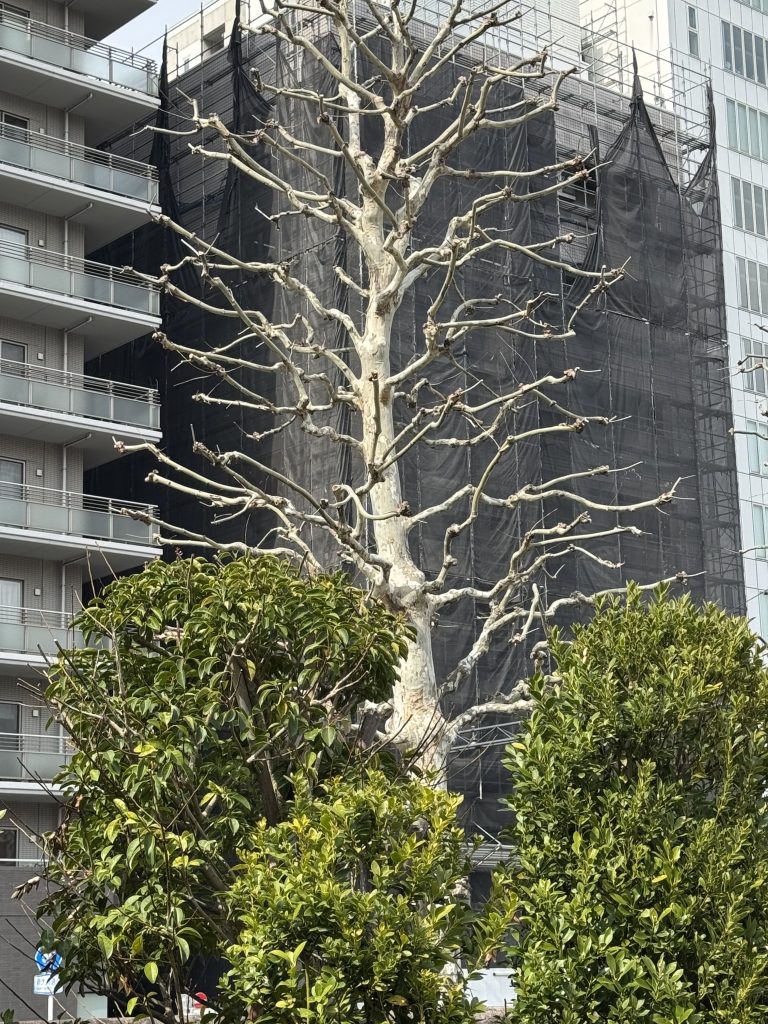
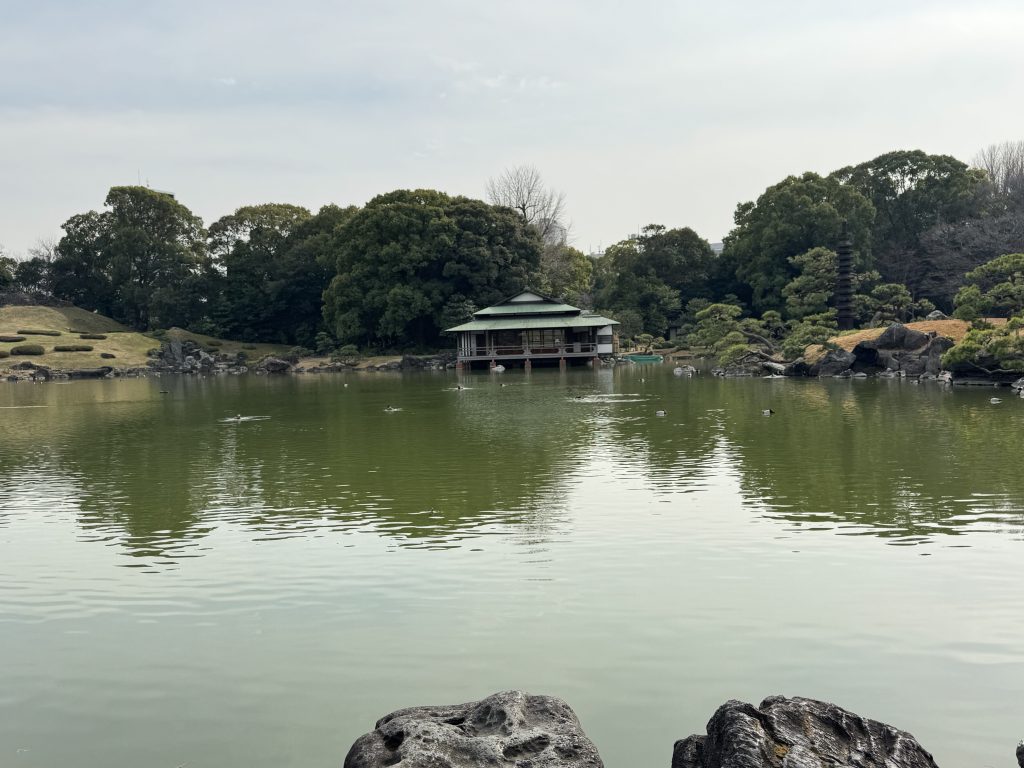
Our next stop was a garden that reminded me in some ways of the Butchart Gardens in Canada. It’s centred around a lake and it’s very beautiful, though in a very different style to the Canadian one.
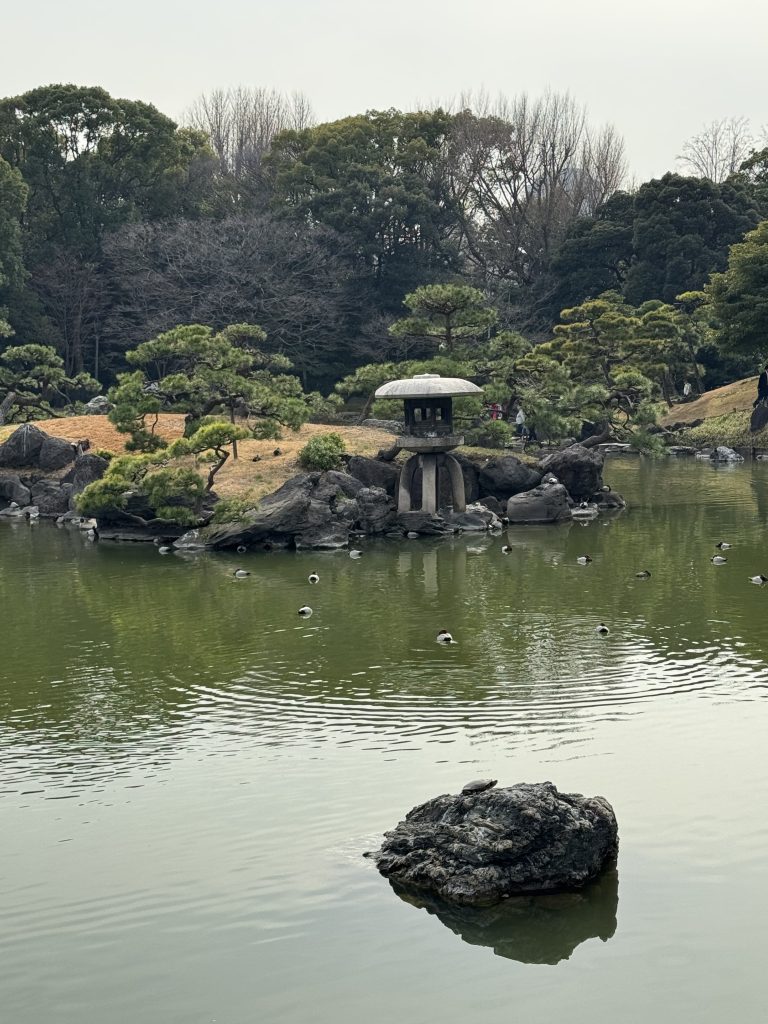
It’s called the pure and clean garden. It used to belong to the founder of the Mitsubishi company. He used to hold meetings there after he bought it from an old samurai family early last century. He donated it to the government to become a public garden.
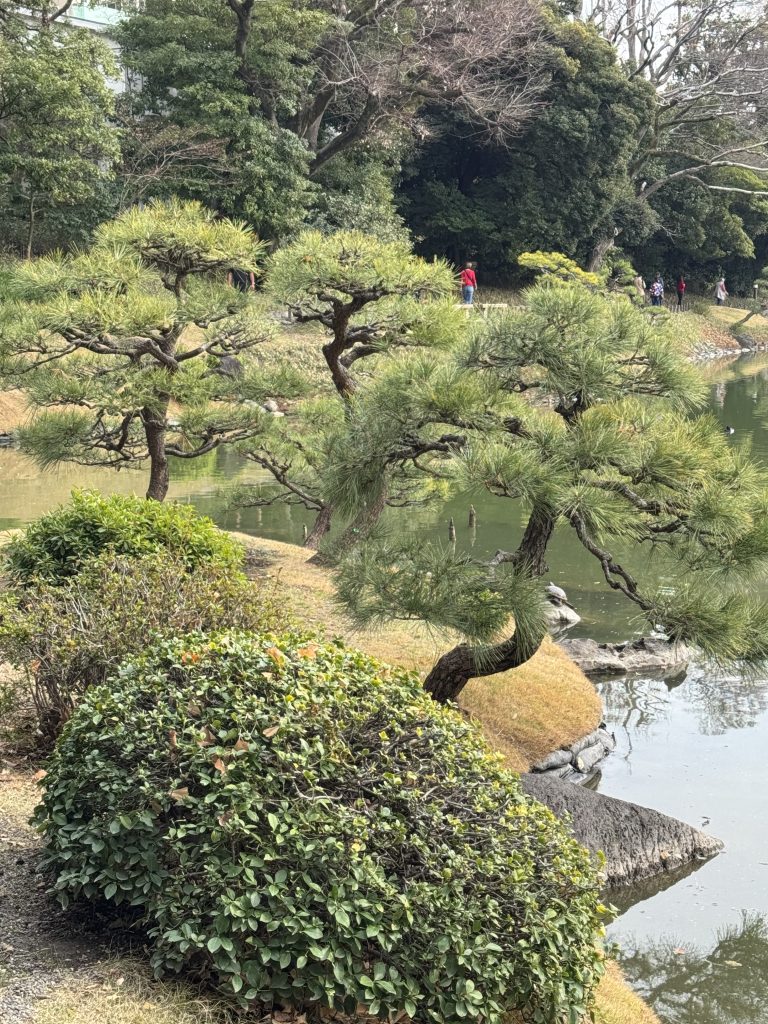
It was a lovely place to wander around.
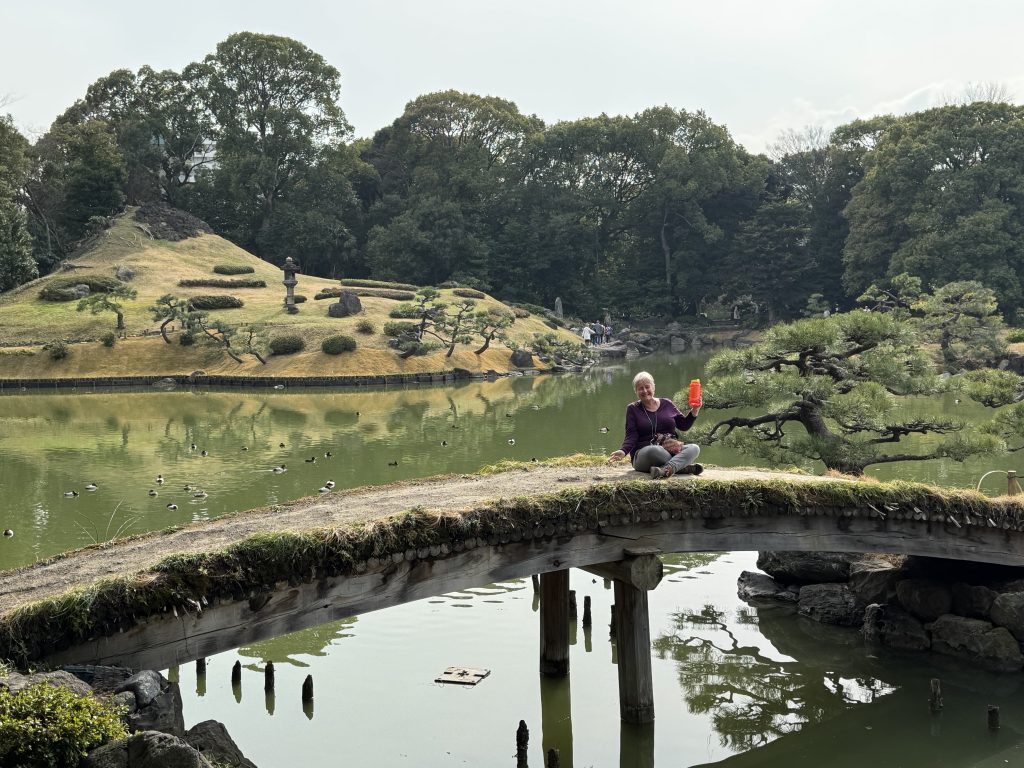
I still have Wanda with me.
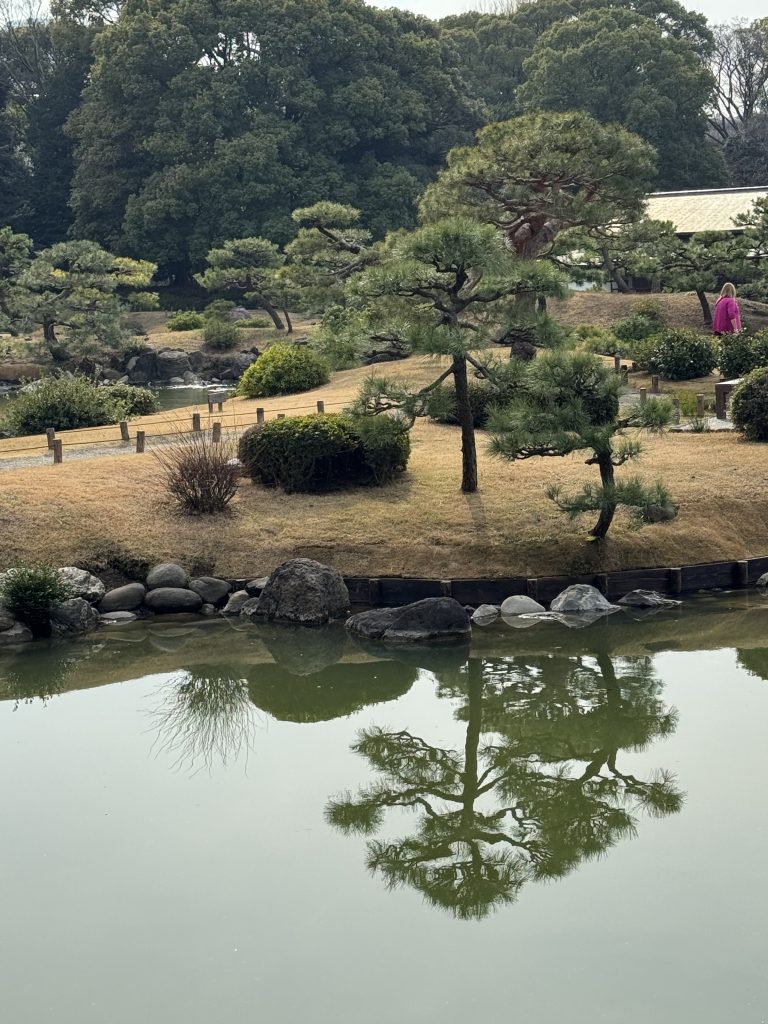
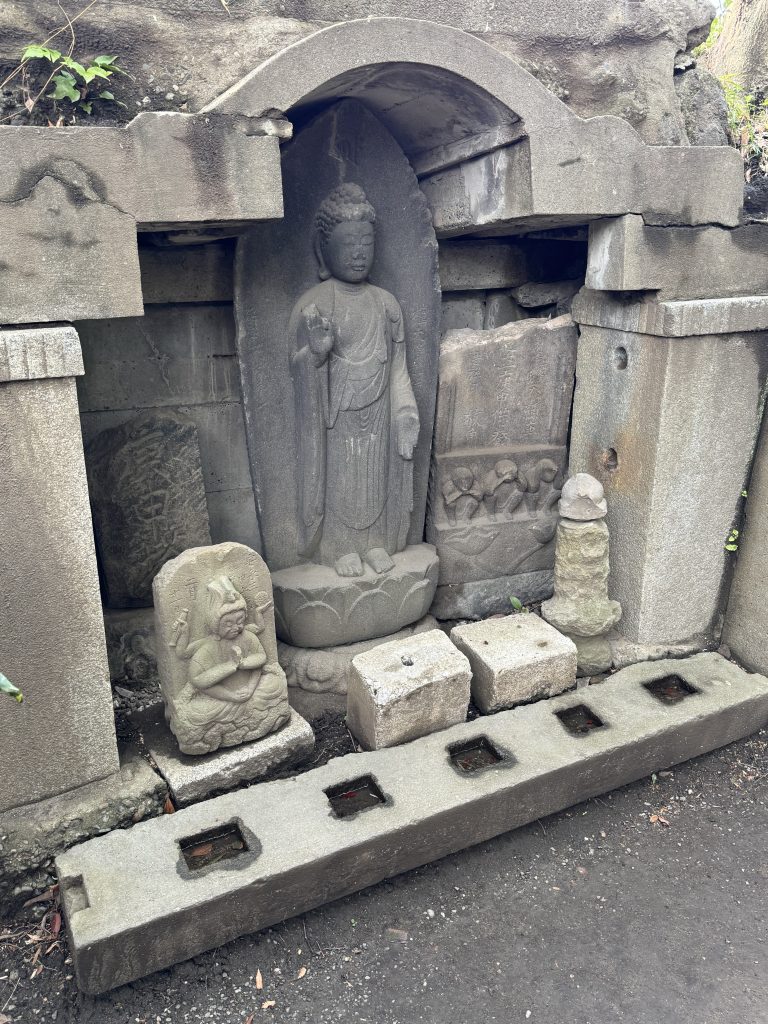
We were set the task of finding the three wise monkeys. They were here, amongst these very old sculptures.
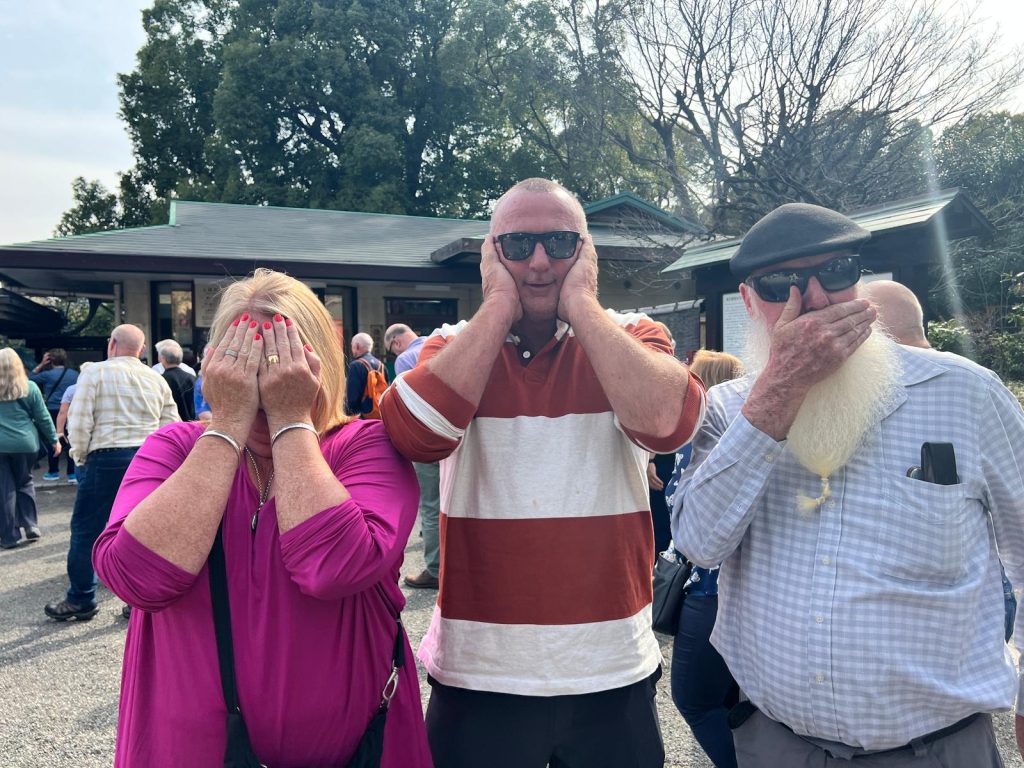
In the group chat, this was posted with the caption, “Found them!”
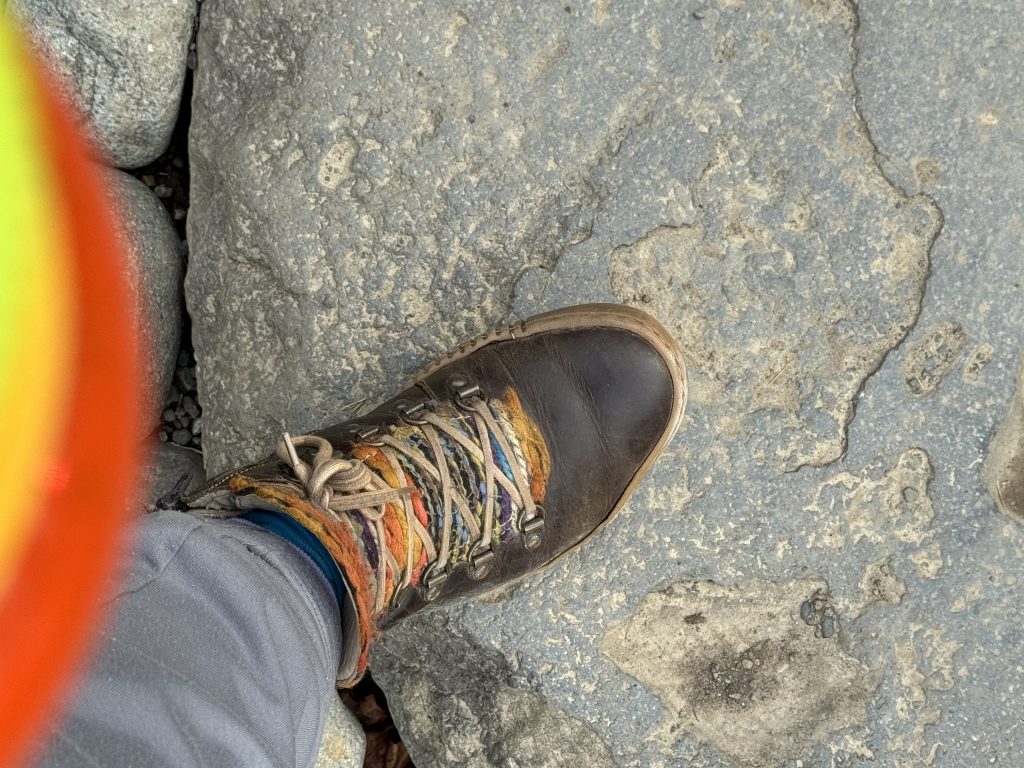
This park is all about the rocks. The Mitsubishi guy shipped back rocks from all over the world to place in the garden. As I was stepping along the beautifully manicured trail, it occurred to me that these boots and I have stepped on many different trails; from cobbled streets in London to the rough climbs in Central Australia to the carefully crafted paths in Japan.
How wonderful life is!
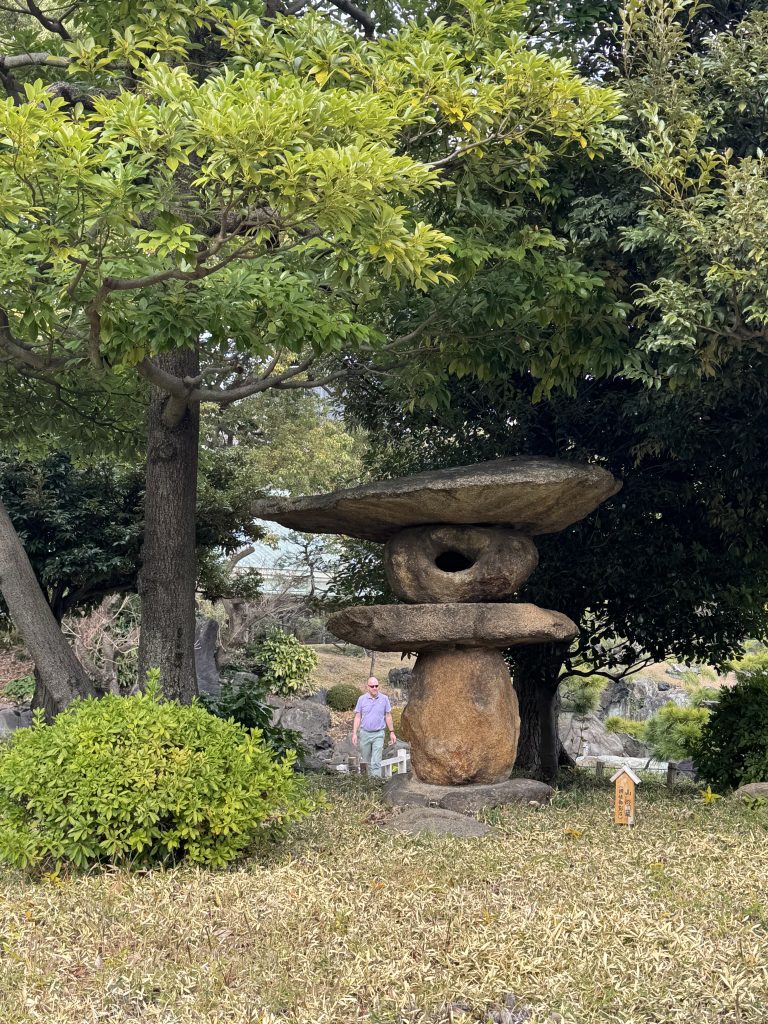
And just like that, we were off to something completely different.
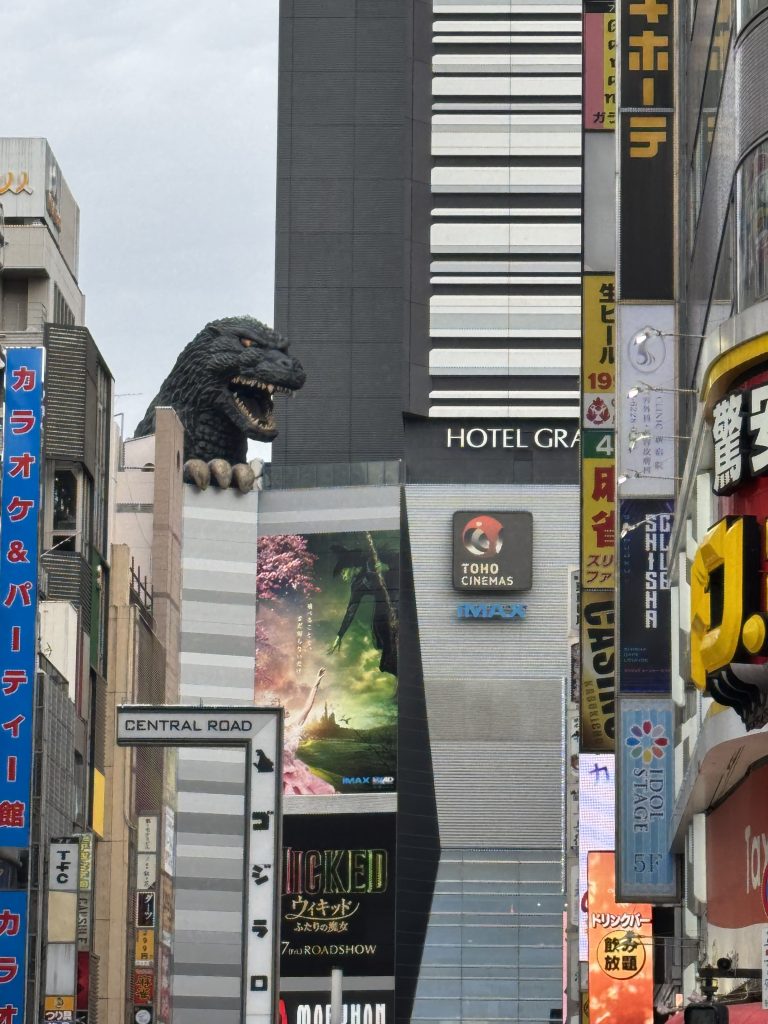
Godzilla, anyone???
Today we went to Shinjuku, Tokyo’s biggest station, where an average of 3.6 million people A DAY commute. It must be hell during peak hour.
We were here to see Godzilla, the 3D cats and the red light district.
This is only part of it, it was the silliest and most impressive thing I’ve seen.
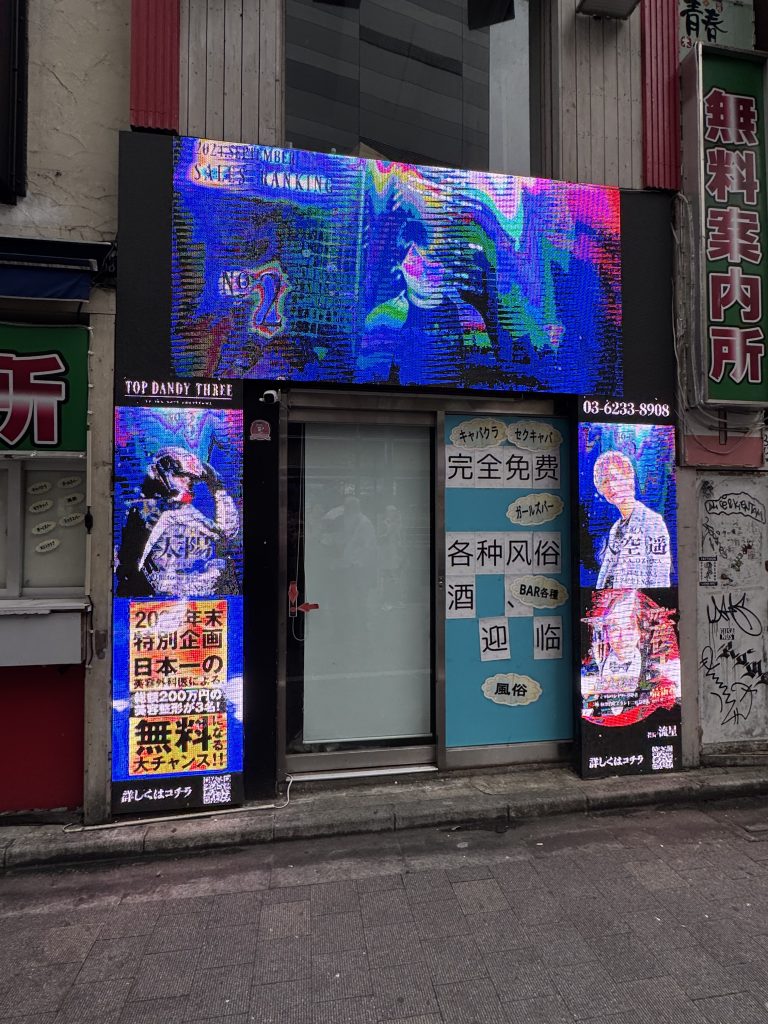
And here’s a bar advertising the young men available for women to buy a drink for them.
Prostitution is illegal here, and the conservative attitudes coupled with the insane work/life imbalance means that some weird things are big business here.
“Liquid business” is huge. This is a description of bars where men and women go to flirt and talk with gorgeous young things who get them to buy drinks at hugely inflated prices. There is no sex involved… yet to lonely people these liquid workers can seem like a boyfriend or girlfriend.
The first time you go to a place, you can choose which girl to see. After that, every time you go back, you have to see the same girl. You can see how people will feel like they have a relationship with that person after a while.
Apparently, it’s acceptable for married people to do this. After all, they’re only talking…
It’s a bit sad.
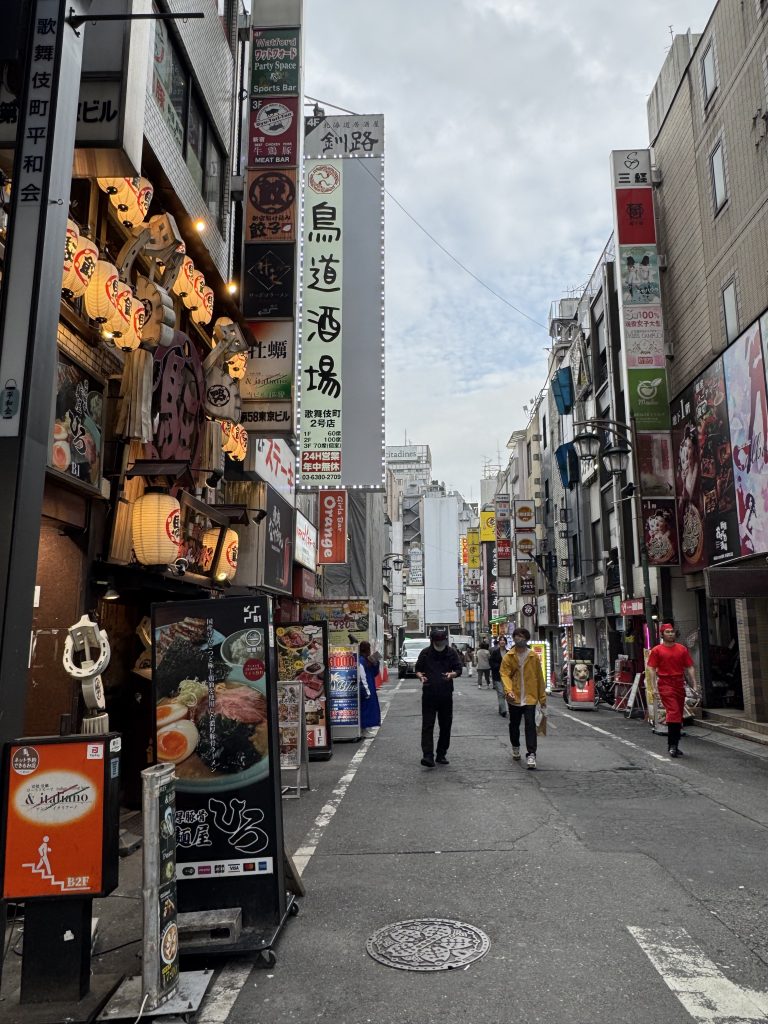
Some more of Ben’s Fun Facts:
Fermented beans for breakfast is a traditional dish. . “You try once. Once is enough!!”
Curry with rice. The Japanese curry is sweet.
Beef wasn’t eaten until the Meiji restoration. Beef comes from working animals, so for an agricultural society, it’s too expensive to use cattle for eating. They ate fish almost exclusively.
Now, Japan’s wagyu beef is the best in the world. The farmers bring up the cattle to feel no stress. For 2 years, the cattle are fed feed mixed with leftover sake products. They definitely feel no stress!
Horse meat is considered a delicacy and is eaten raw.
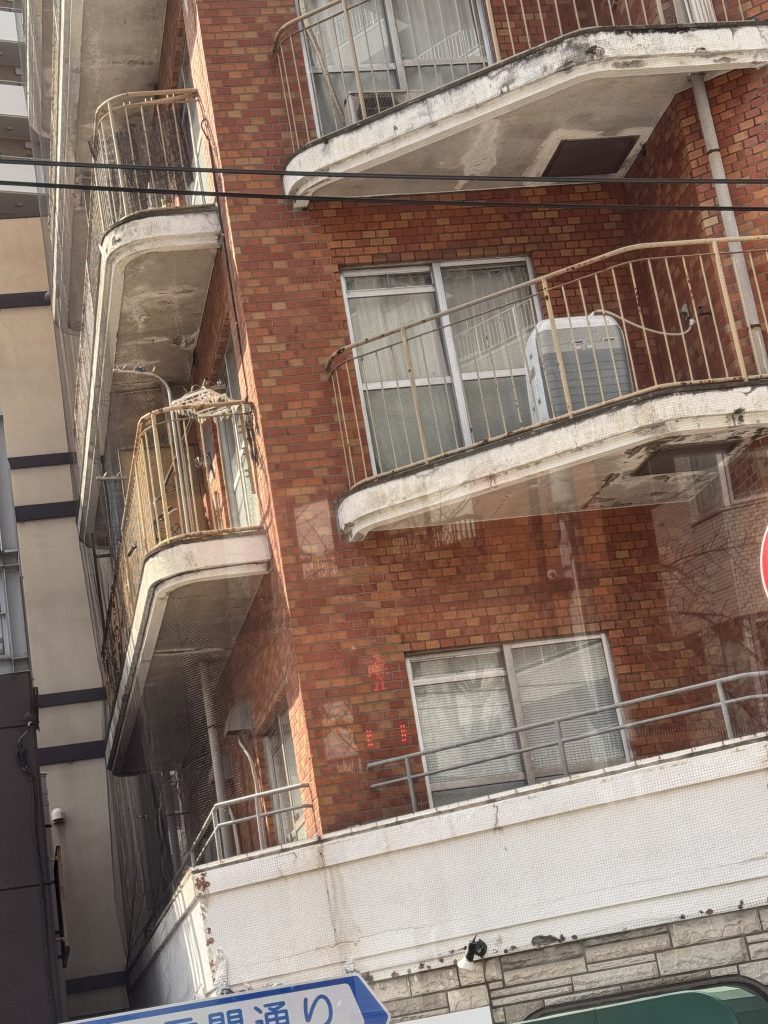
See the squares on the roof of each balcony? They’re designed to be able to be pushed through in case there’s a fire and people need to escape. I never would’ve noticed them if Ben hadn’t have pointed them out, and yes. They’re everywhere.
The city of Tokyo has been destroyed twice. In 1923 there was an earthquake and typhoon on the same day. Then, WWII.
There are two professions that are the living history of Japan – the geisha and the Sumo wrestlers.
There has only been one foreign geisha and she was Australian. She came here to make a documentary about the geisha year she can they allowed her to run a geisha house.
Girls who decide to become a geisha have to lead a very traditional lifestyle. They cannot even hold a mobile phone. The hairstyle is very elaborate and takes 1.5 hours to do and it gets done once a week. They have to sleep on a very high pillow. “ They say you get used to it after 2 weeks.”
Contrary to what some people think, a geisha is not a call girl. She sings and dances only.
If you become a champion sumo, you are now Kami and people can worship you. You don’t live as long as most people, though. The life expectancy is 60, due to the weight and diet.
Tomorrow we head out of Tokyo to see Mt Fuji up close. It’s been an action-packed two days and I hope you’ve enjoyed it as much as I have.
Dad joke of the day:

Wonderful photos and commentary. I’m really enjoying your trip.
I agree that the garden seems to have a similar vibe to Butchart in Vancouver, which I have happy memories of visiting.
The strawberries reminded me of an article I read in The Guardian at the weekend.
Here’s the link:
https://www.theguardian.com/food/2025/mar/15/viral-strawberry-erewhon-los-angeles